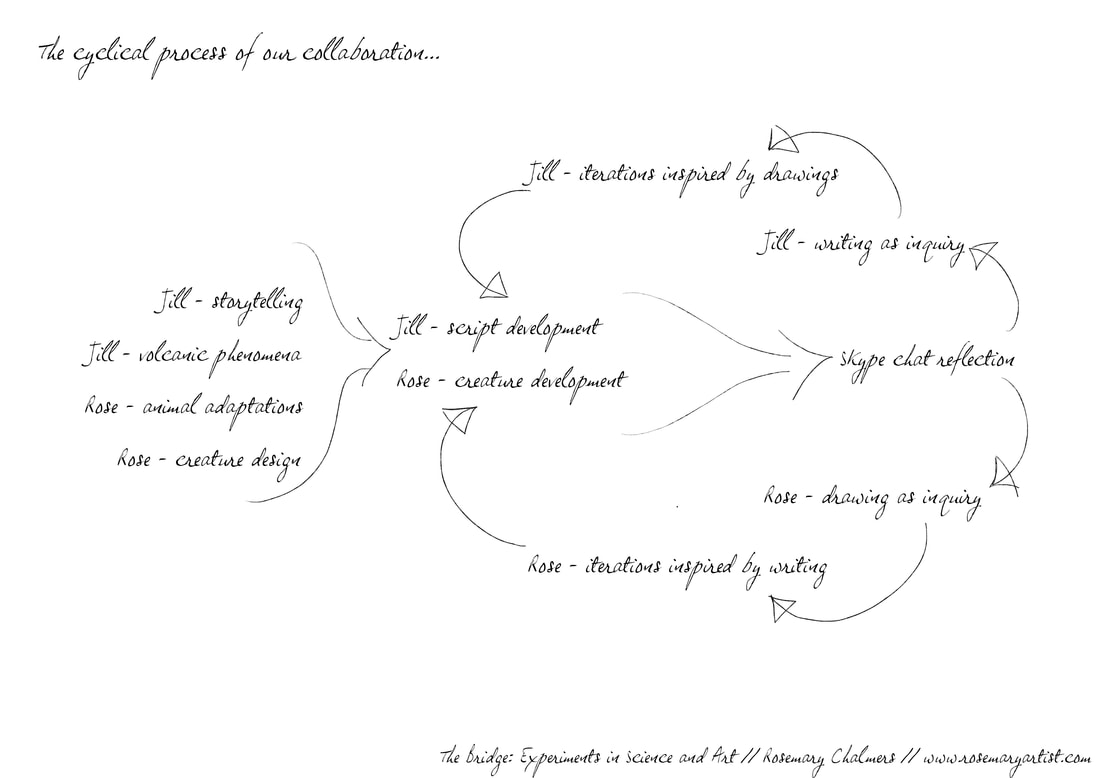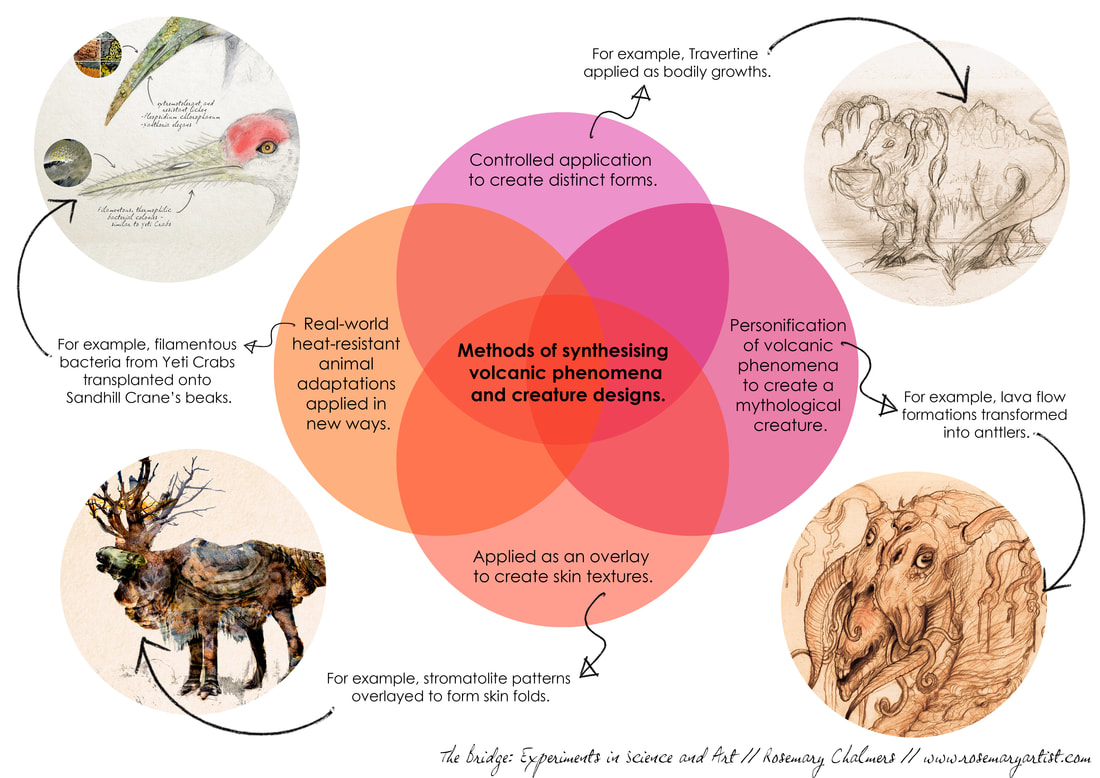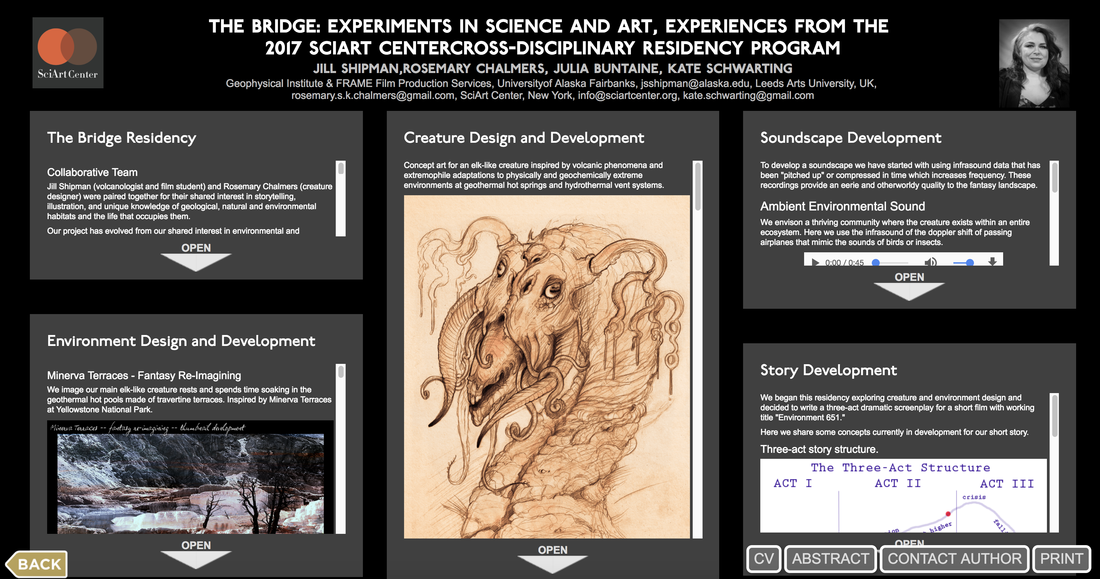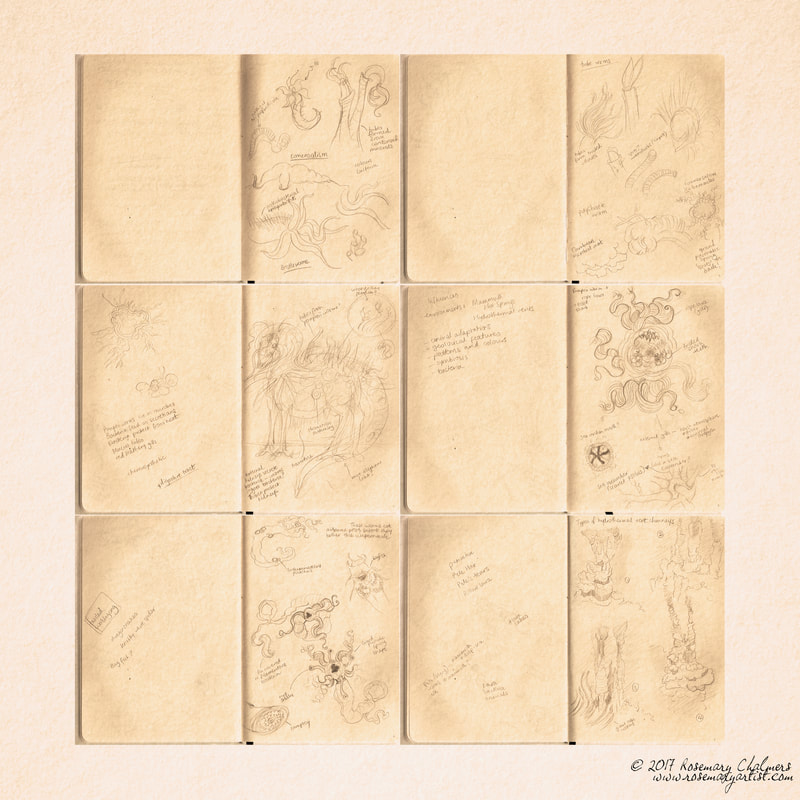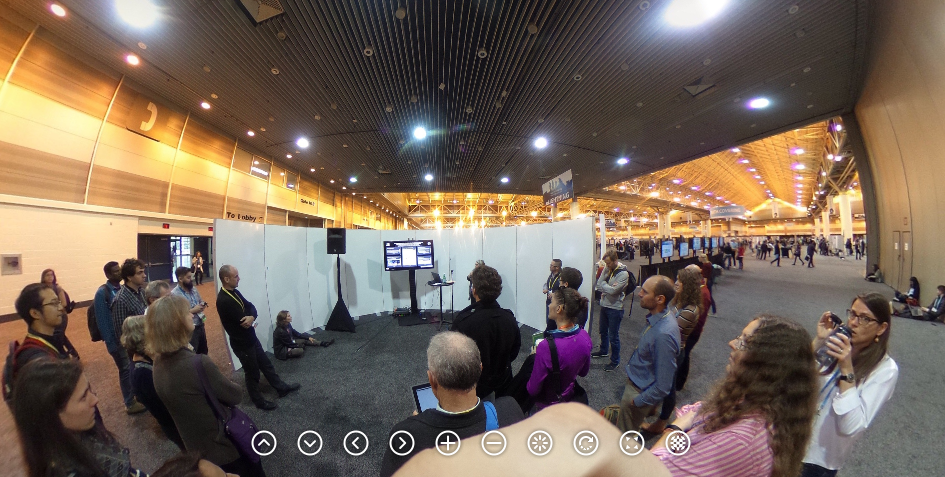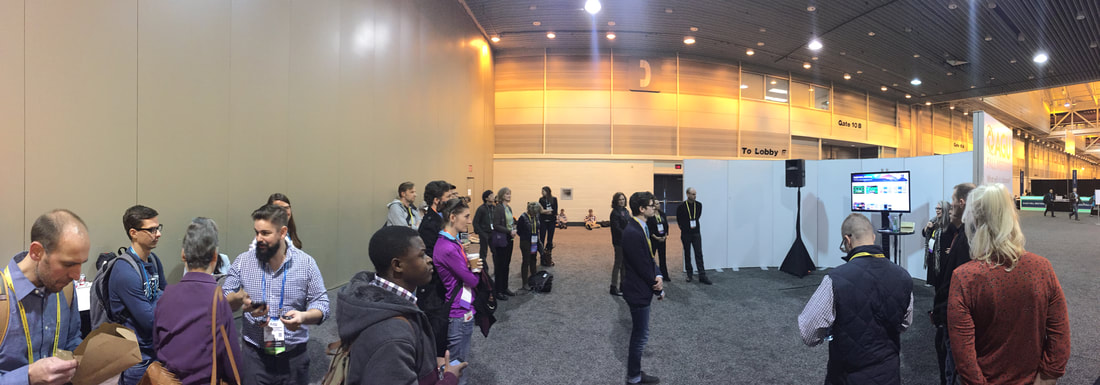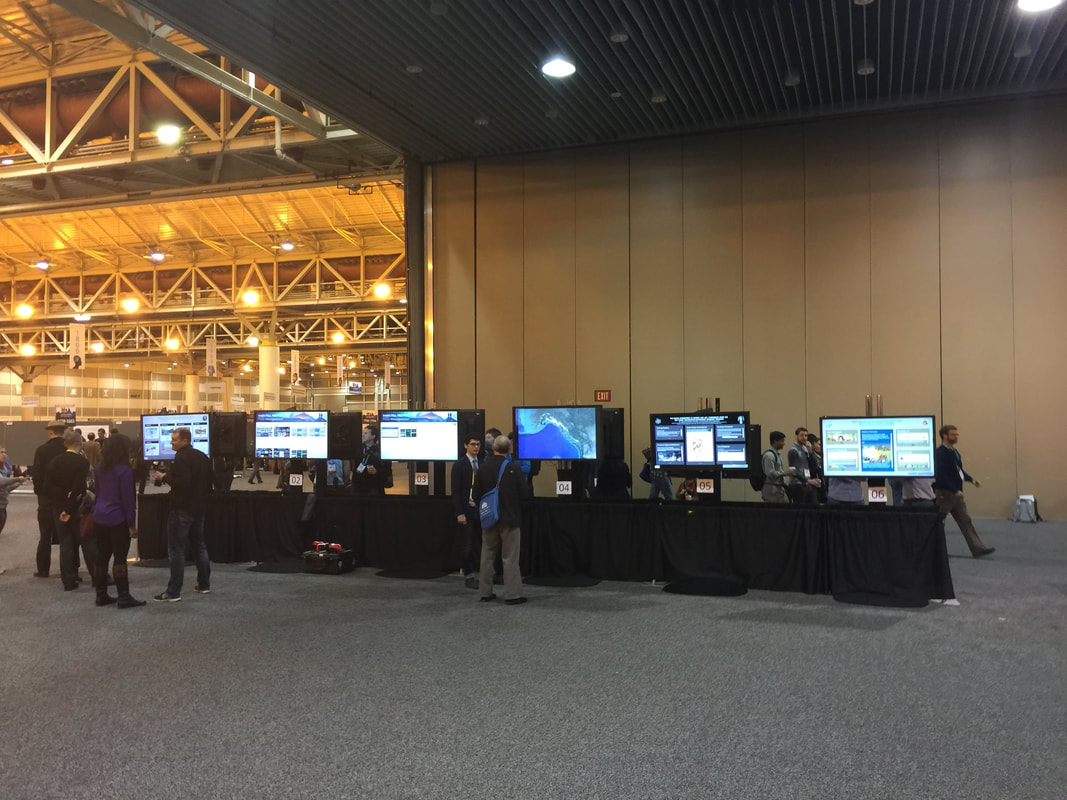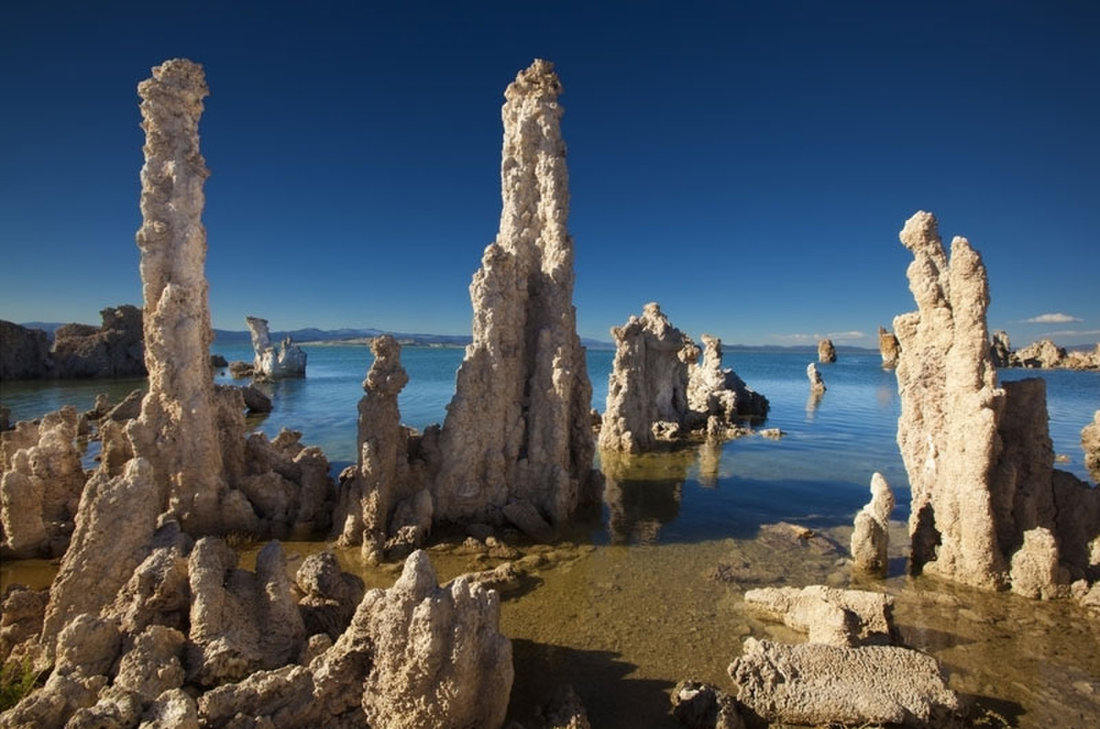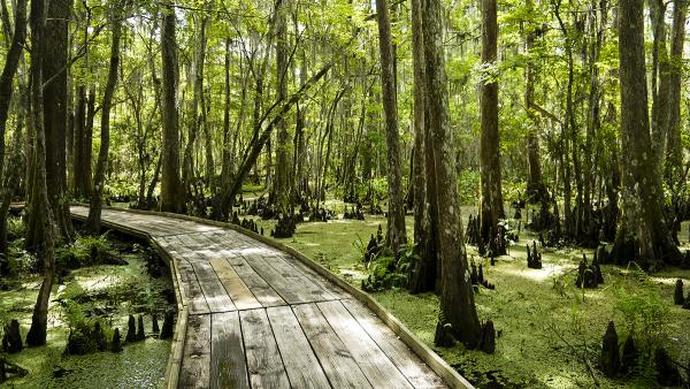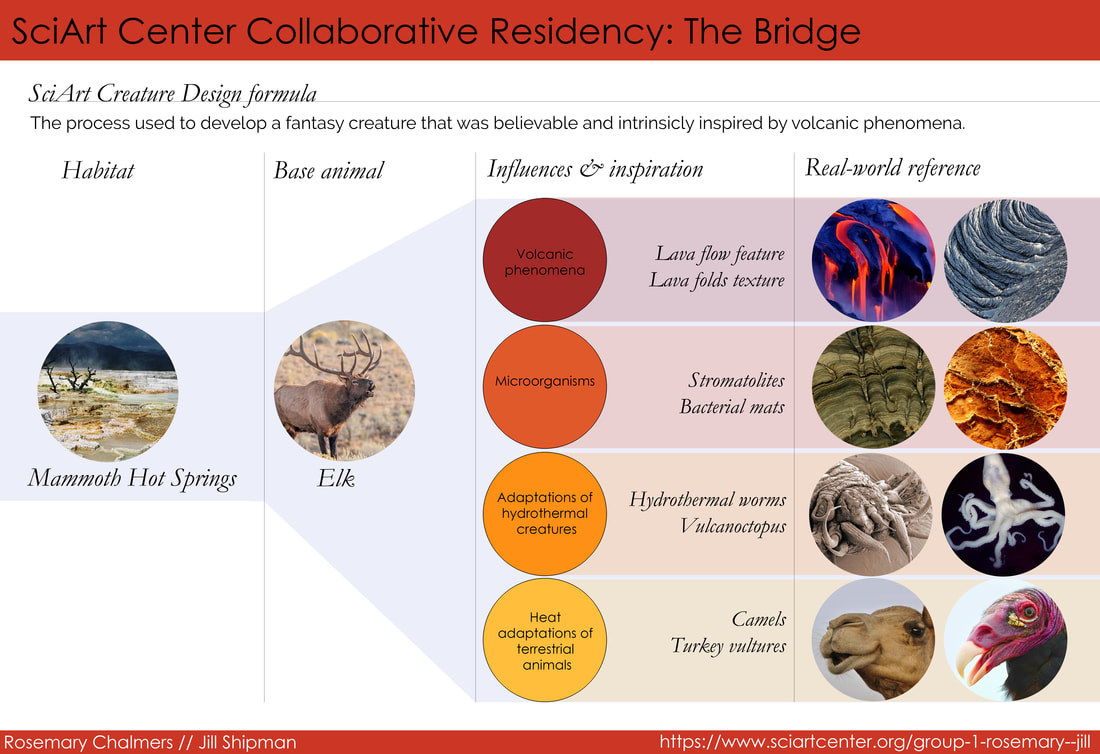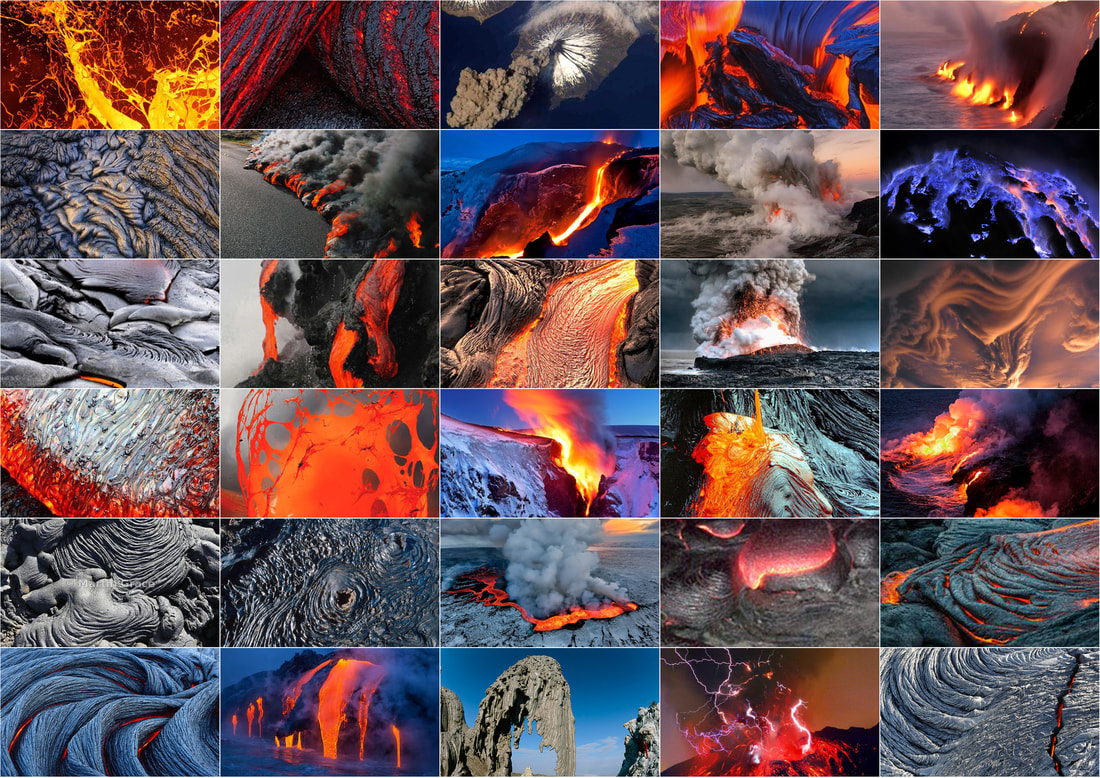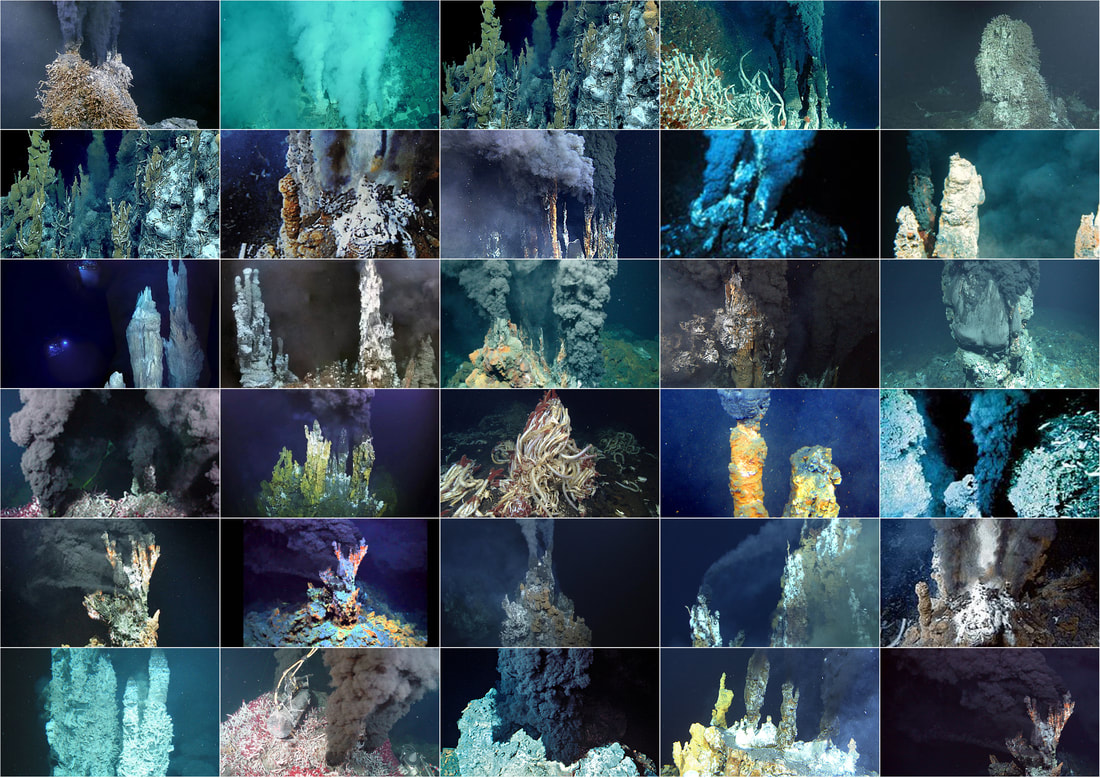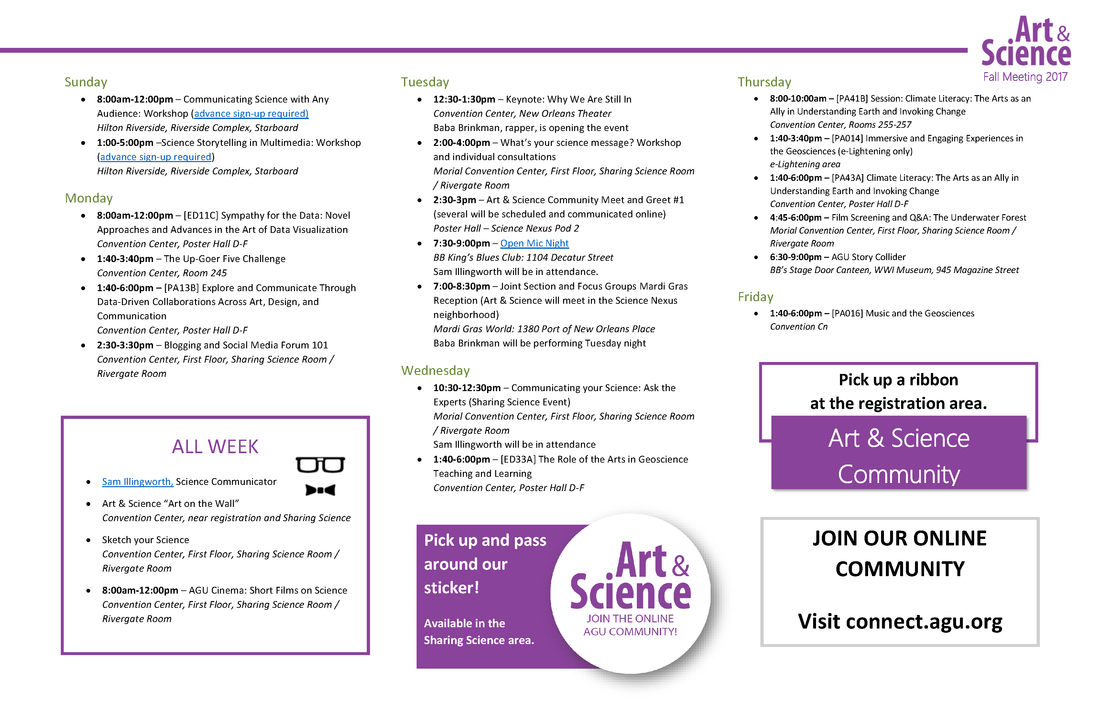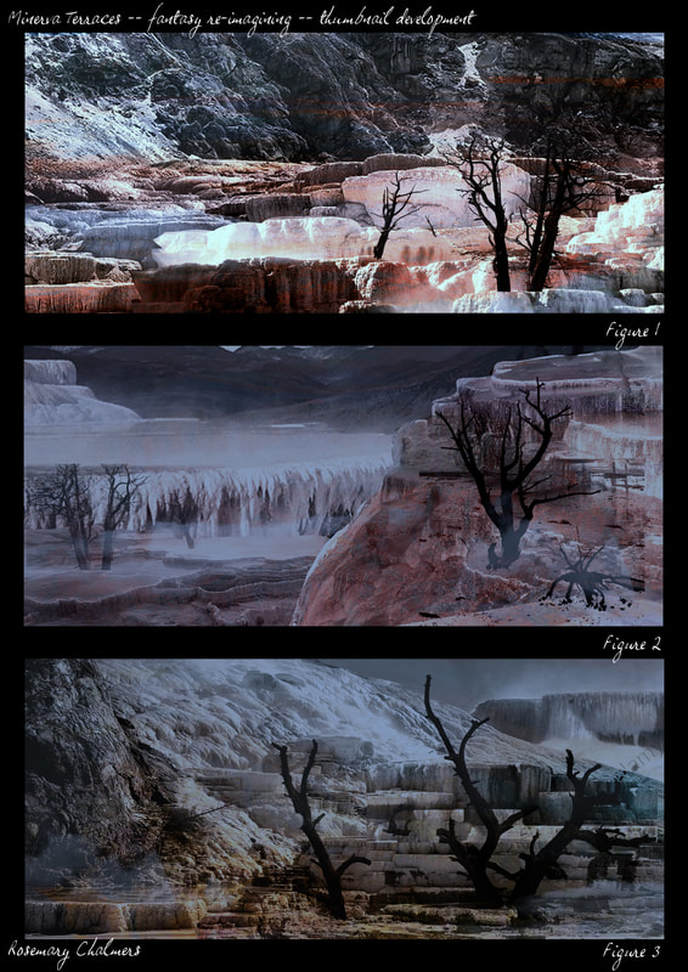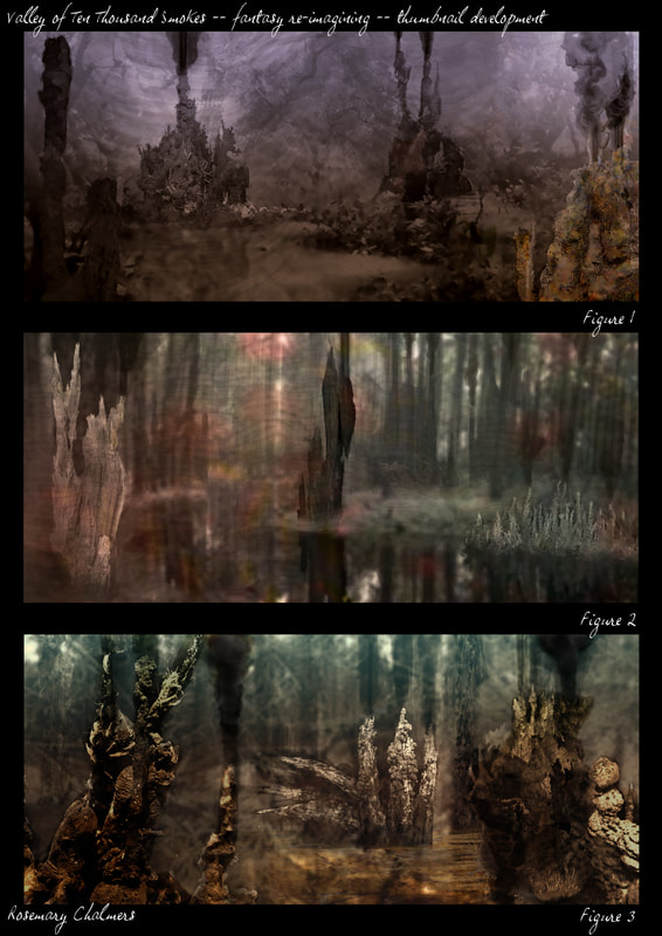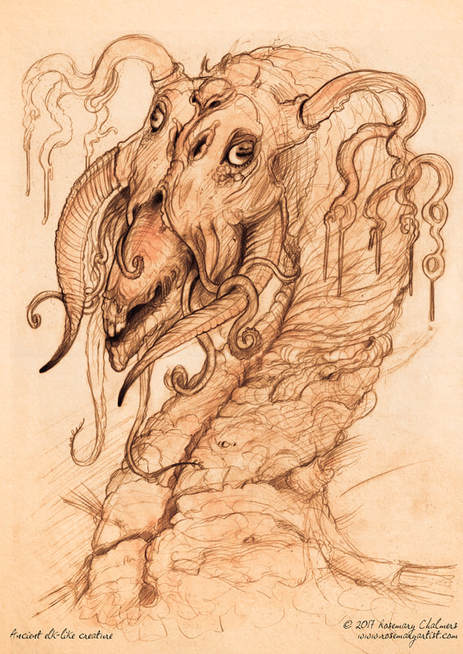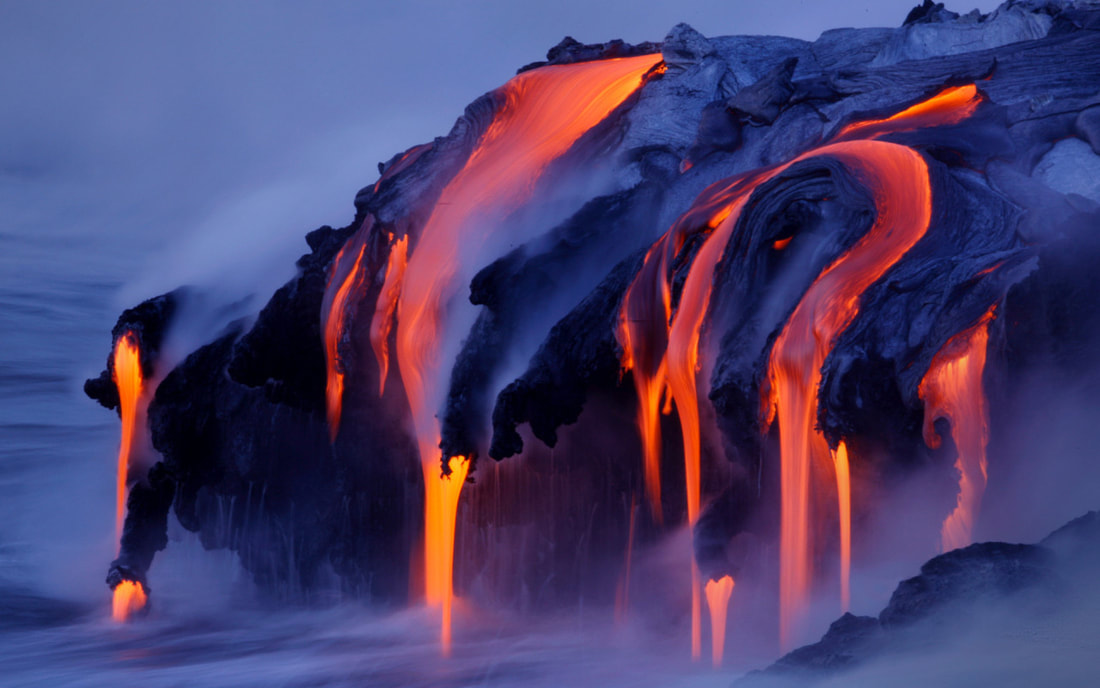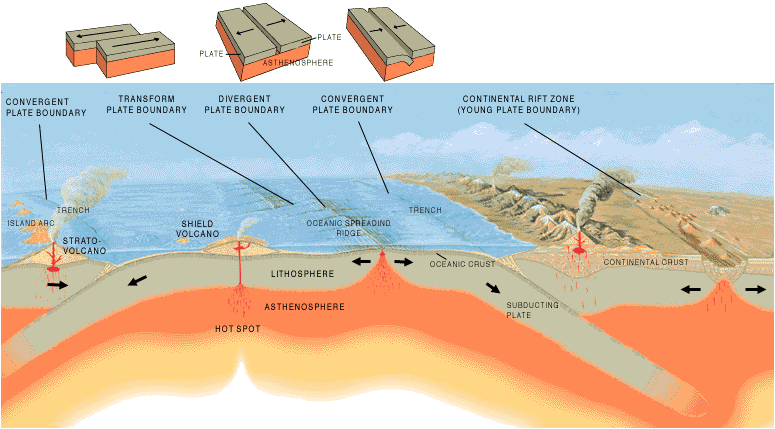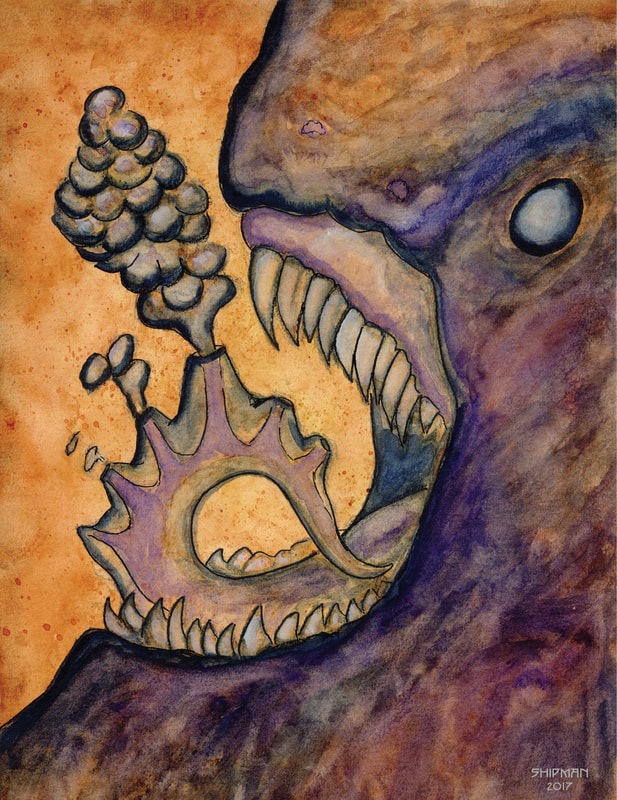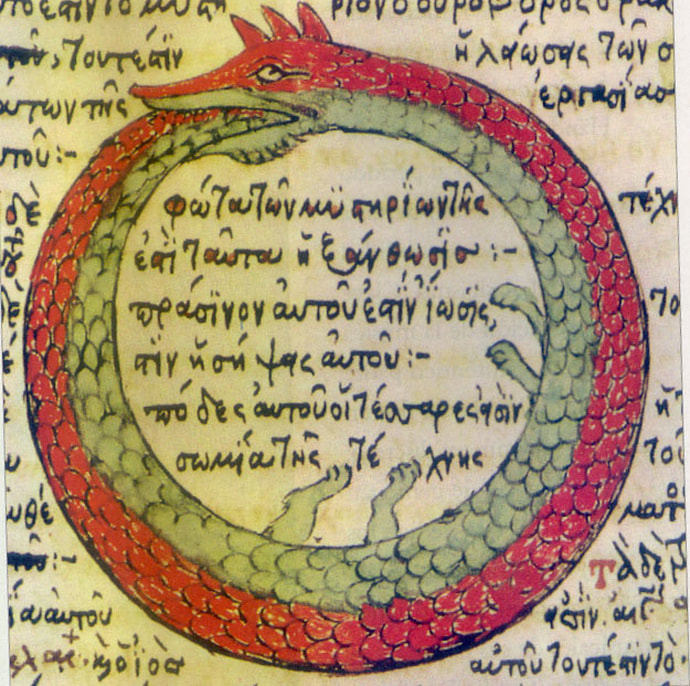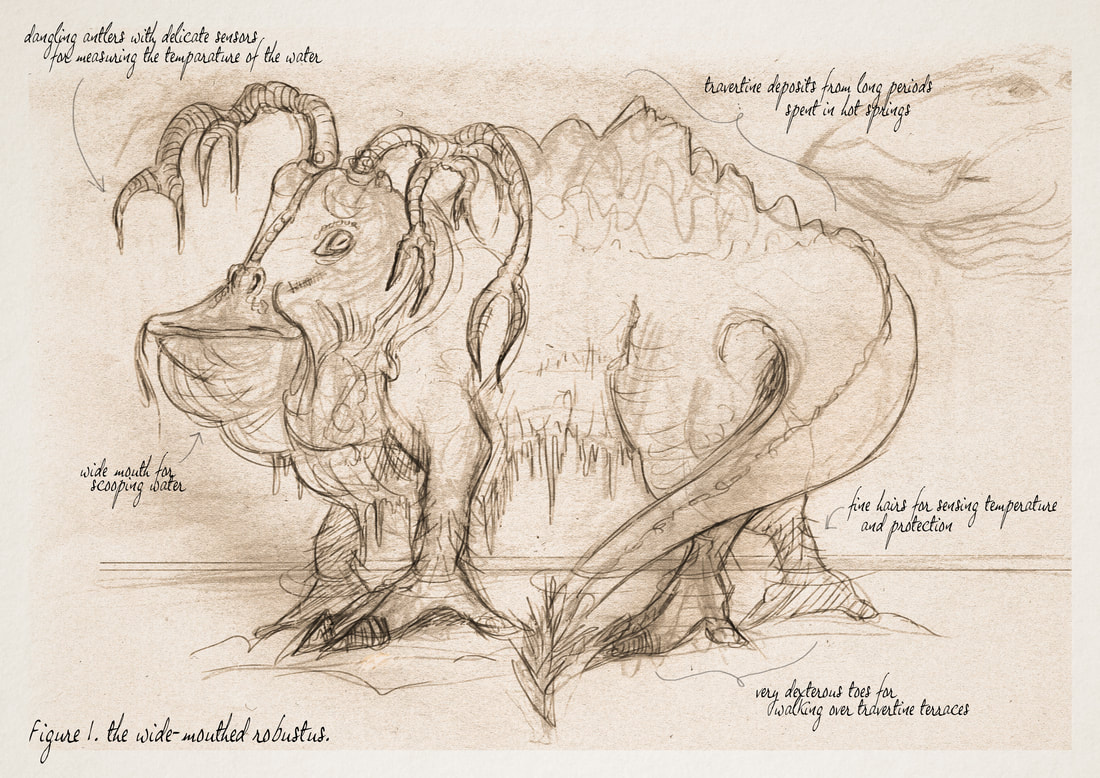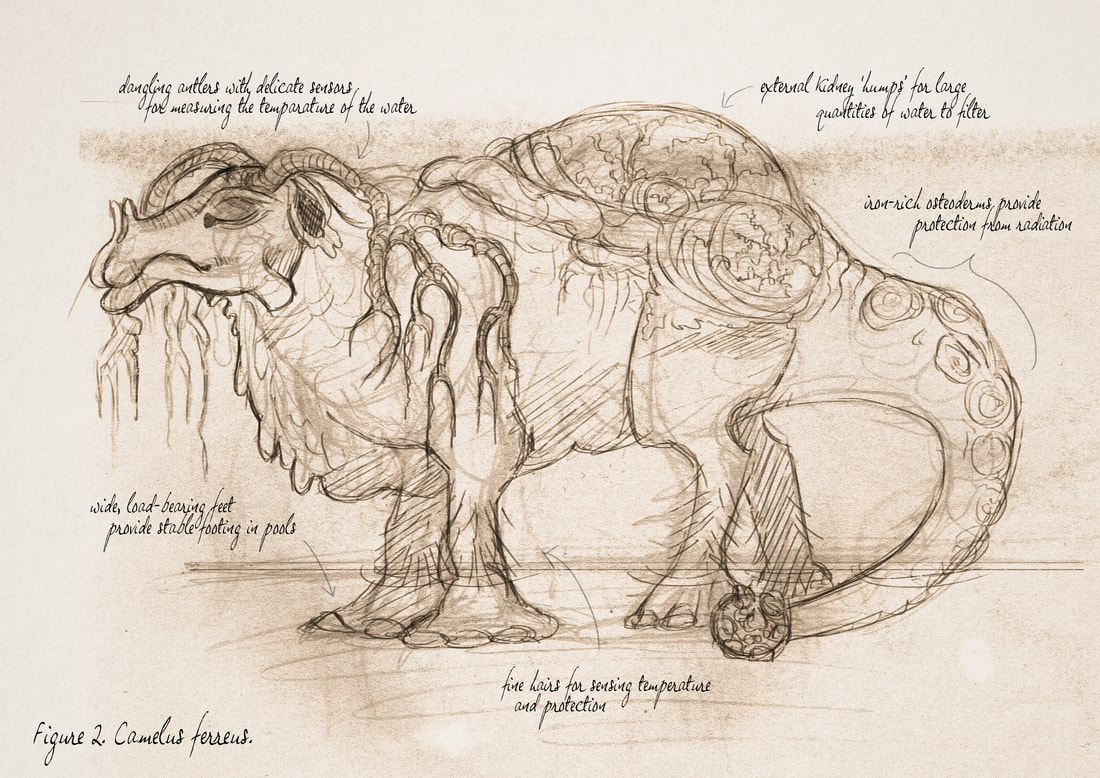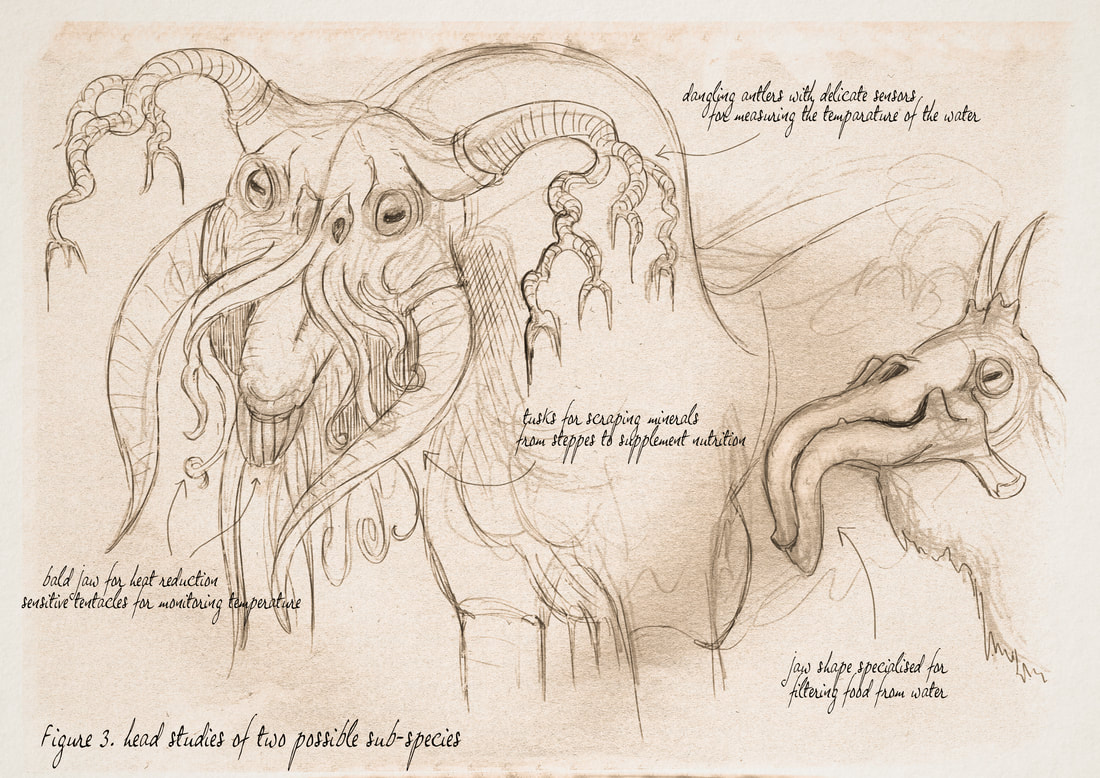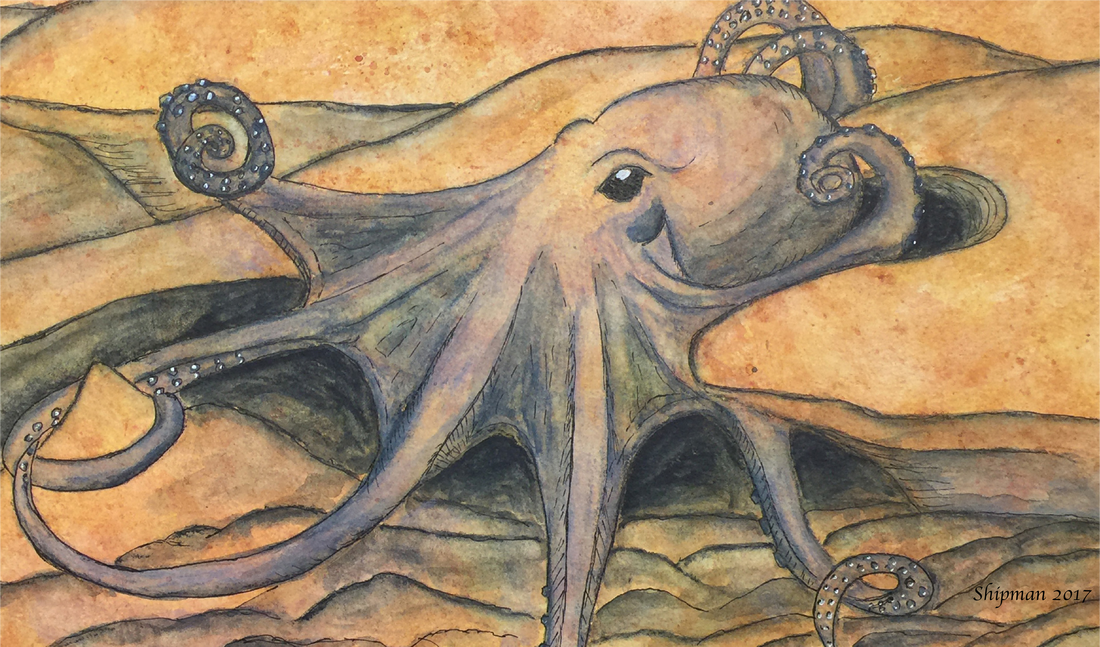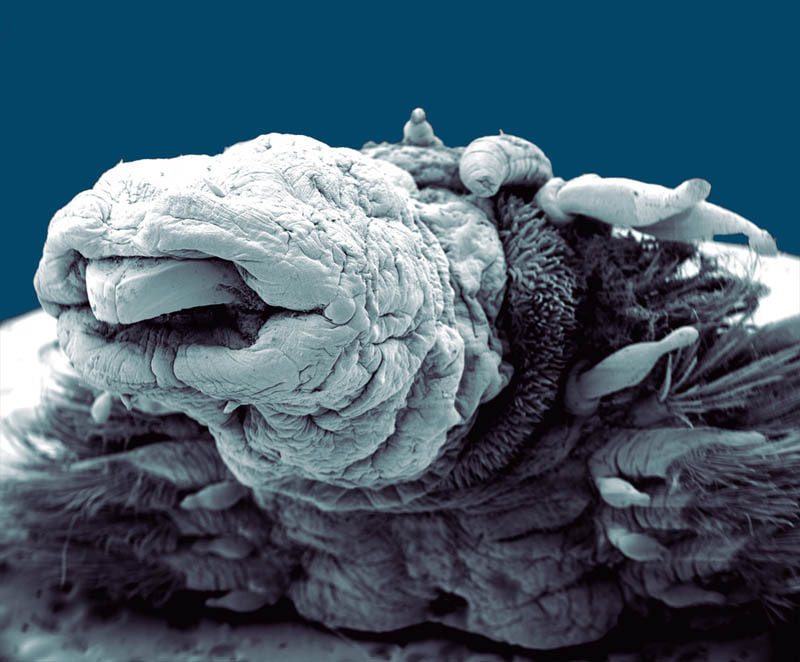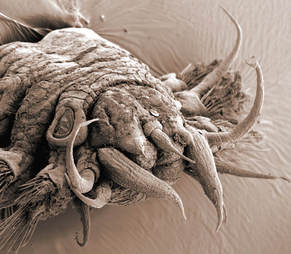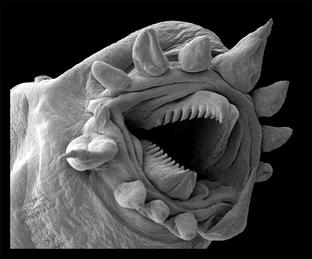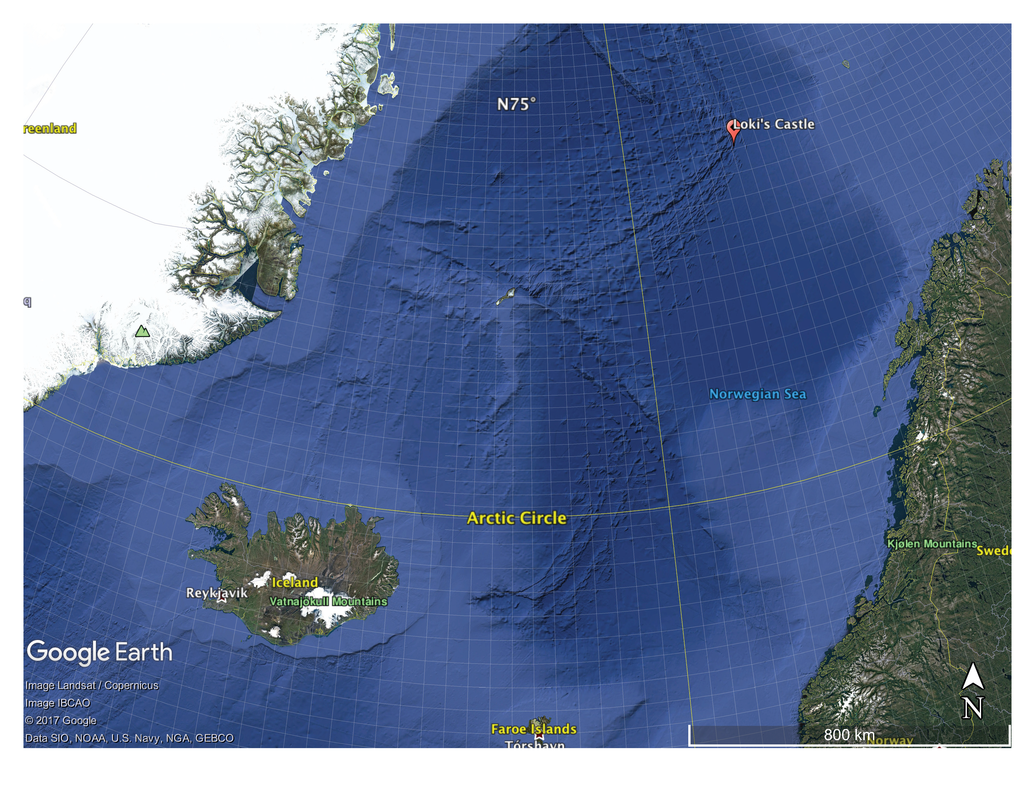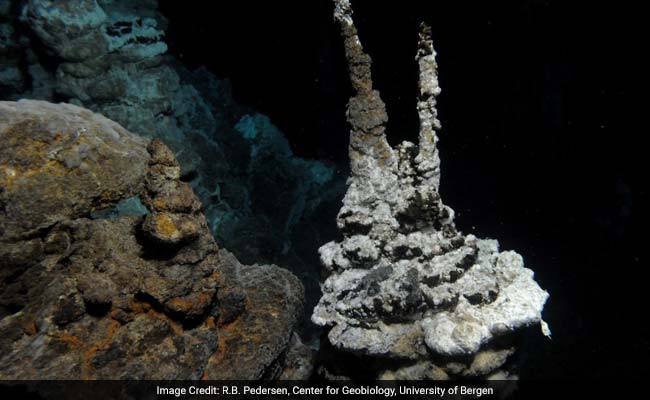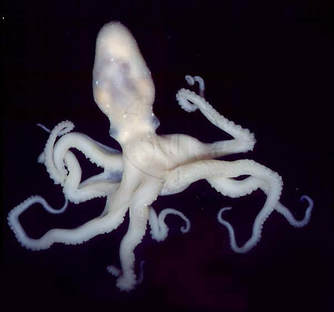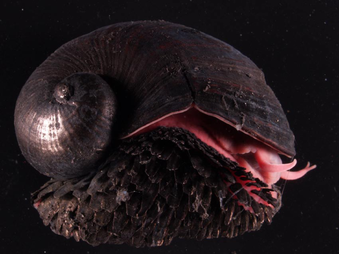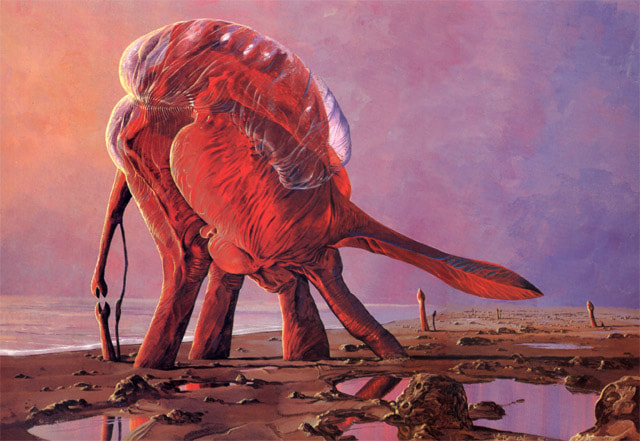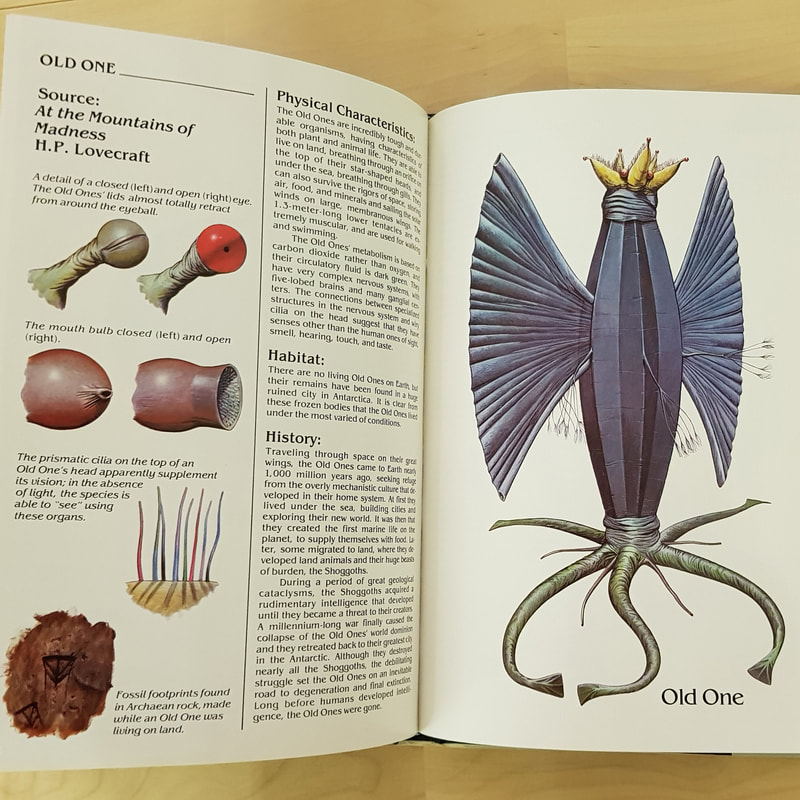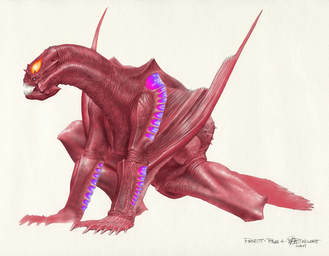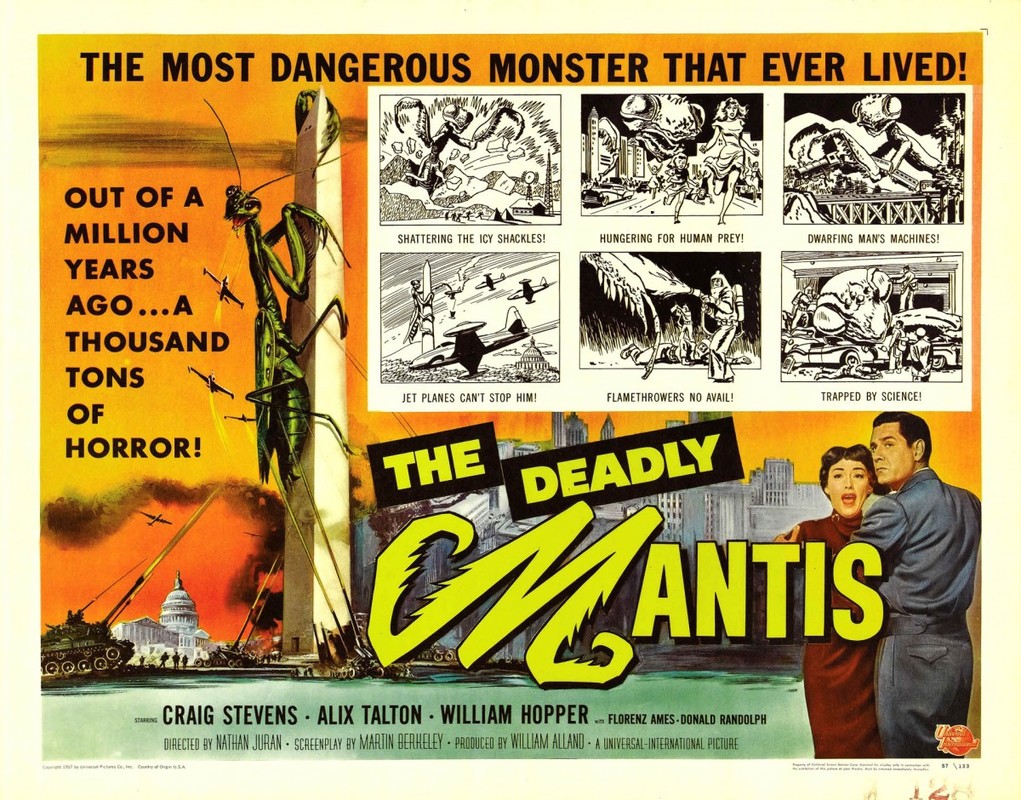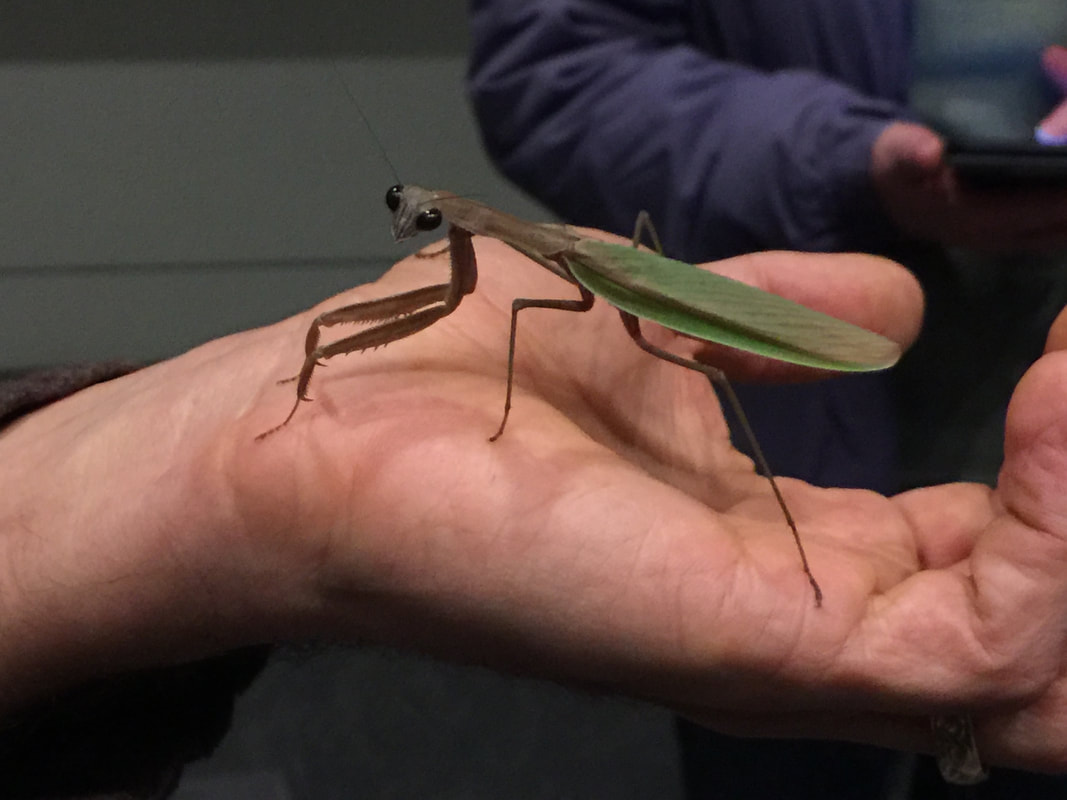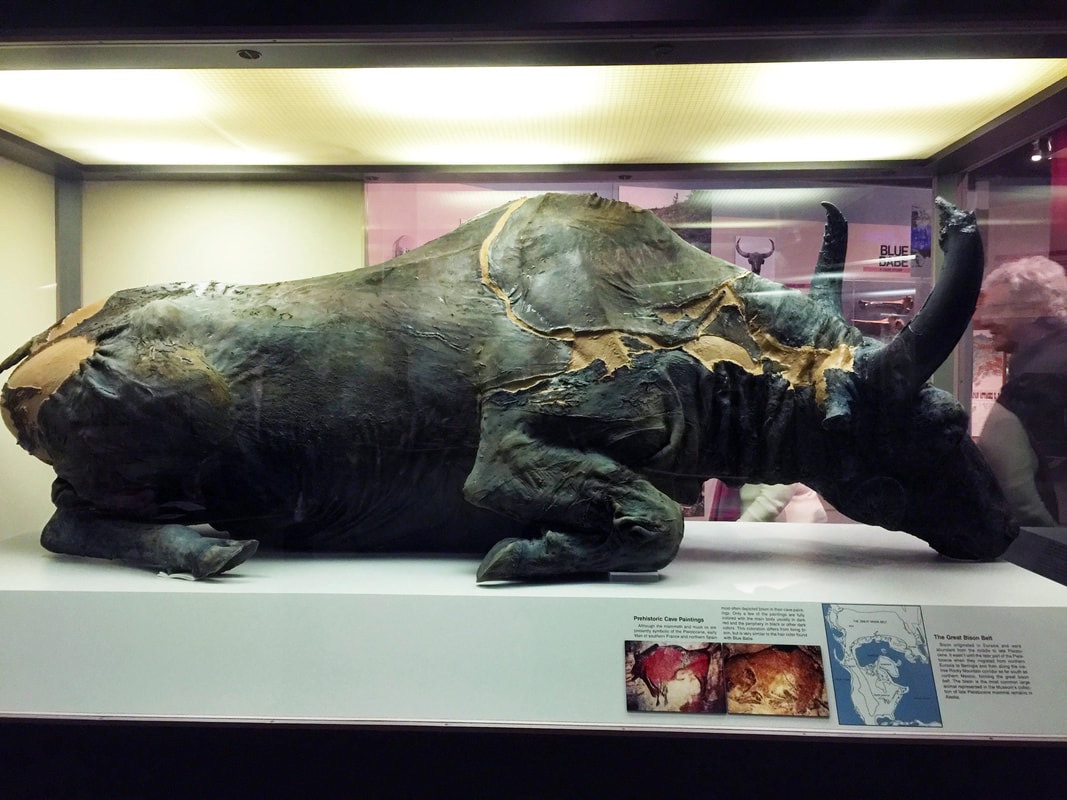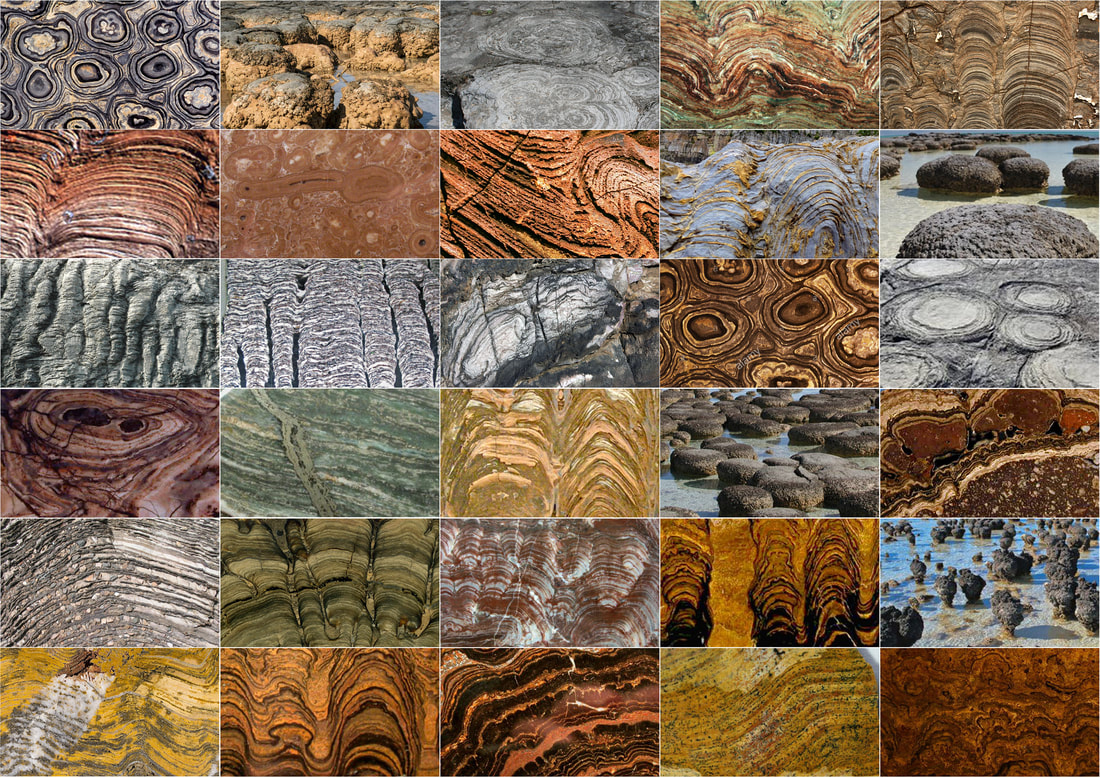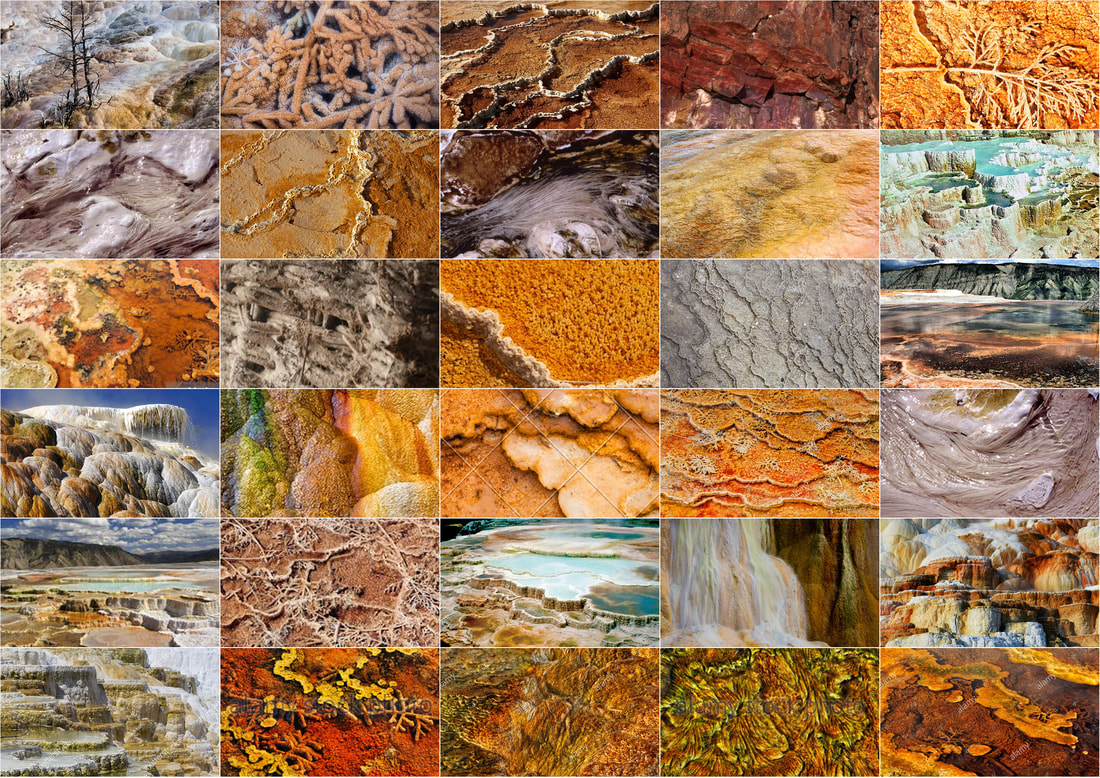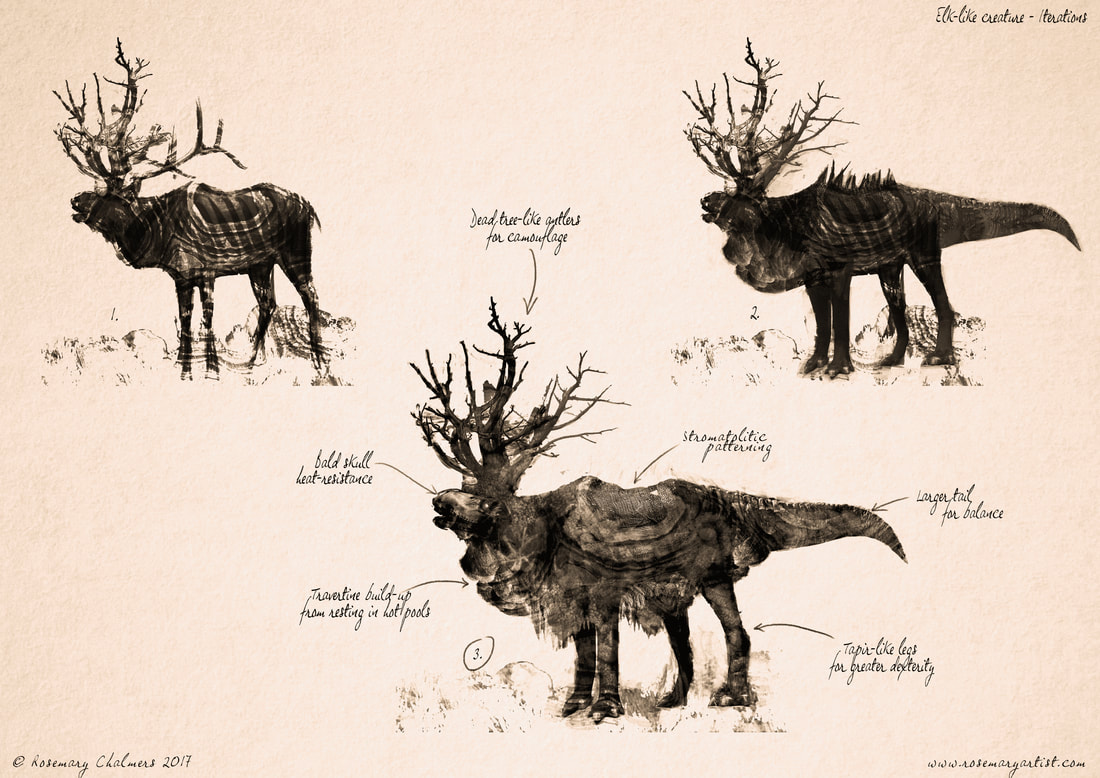|
Rosemary My preconception of working across disciplines on entering the residency was that Science would help legitimise my Art. For example, the creatures that I design would be more believable if they were based on principles of Science. The residency has enlightened me to the fact that this is just one method of Science and Art collaboration. The route we took was more of an explorative approach. The creatures were less speculative biology and more speculative fiction. We let the narrative play an important role in the development of our project. Jill’s specialism of Volcanology was a starting point and the ‘what if’ creatures explored the possibilities of where Science can take the imagination. The most valuable aspect of the residency was the fact that there was not a required output. The fact that we could let the project develop organically and not be focused on producing a final product was beneficial because it allowed us to take our time and really discover what it was Jill and I wanted to communicate. With the luxury of time, this meant that Jill and I developed a process that was cyclical. I have illustrated this feedback loop below. This allowed for us to build on each other’s’ work in an iterative way producing work that was very novel to me. Drawing as inquiry Through testing ways to synthesize volcanic phenomena and creatures, I have discovered more about my practice. There are four methods that I used to incorporate volcanic features into the creatures I designed:
To further illustrate the impact the residency has had on my drawing practice, I have visualized the discoveries I made below. Plans for the future The residency has been an amazing experience. Collaborating with Jill has been rewarding and inspiring. We are most definitely going to continue the project we have been developing. We have been discussing the next steps for our collaboration: as well as further world-building and script development we will be inviting more third-party evaluation and looking for venues and funding to put on a trans-media exhibition or interactive workshop. Acknowledgments Thank you so much to Julia and Kate for all their hard work, guidance and patience throughout the residency. I am grateful for this fantastic opportunity and I hope to have the chance to work together again. It goes without saying that I am over the moon that I was paired with Jill. Thank you for being such an inspiration and a pleasure to work with. I’m looking forward to going forward and really making something of this project we have created! As this is the last blog post of the residency, thank you for your interest, cheerio and take care! Rose http://www.rosemaryartist.com/ Jill Reflections on the Collaborative Residency Prior to this residency, I had participated in collaborative art and science projects before but the focus was on creating an end product. For example, a film or sculpture, and based around a set theme, Arctic Science. While this is a great way to collaborate, participating in the Bridge Residency has made me realize there are different approaches to collaboration. Through the Bridge Residency, we focused more on process and had ample time to create a foundational dialogue that enabled us to explore different ideas and synthesize our expertise and interests in a way that I couldn’t have foreseen at the beginning of the residency. Our project evolved iteratively and organically, developing story and creature design by exploring properties of volcanic phenomena. We concentrated more on what created a good dialogue and exploration of ideas rather than the product. However, we did have the constraint of a presentation at a national conference, American Geophysical Union Fall Meeting. This helped us to highlight the value of our collaborative work-in- progress and to engage in stimulating discussions with colleagues at the conference. I found this freedom to explore ideas through process to be the most valuable aspect of the
residency. My definition of what is a collaboration and what is SciArt have both broaden significantly. I feel like a successful collaboration comes from sharing ideas and through listening and understanding the process of each approach, both scientific and artistic. Skype Meetings - Idea Exploration and Collaborative Work Sessions Rose and I met weekly, if not twice weekly throughout the residency on Skype. I really enjoyed these calls, every time we met, we explored scientific concepts, creature design, writing, storytelling and more. We had time to discuss our interests, ask each other questions, and had time to learn from one another. If anything, our biggest challenge was focusing our what-ifs because we were both invigorated by our weekly “knowledge expeditions.” Since my scientific background is in volcanology, we discussed volcanic phenomena including different types of volcanic eruptions and their deposits, volcanic flows and their emplacement mechanisms and how these are expressed in a range of textural formations. Chemical and thermal dependence, plate tectonics, rock and mineral compositions, distribution and cooling rates, bacteria, archaea and algal mat communities, geologic history and the fossil record. We explored current theories of how life originated on earth in hot springs and hydrothermal vents evidenced in the geologic record as well as theories about how these extremophile organisms may exist on other planets. While I was able to share expertise in volcanology and writing. I learned so much from Rose about creature design, speculative biology, adaptations and artist workflow. Additionally, these meetings prompted me to engage in discussions with colleagues in other disciplines at my University such as microbiologists and veterinary scientists to discuss the design elements that Rose and I were developing. Previously my work has centered on volcanic hazards and their impacts to nearby communities and to air traffic. It was a broadening experience to think about volcanic ecosystem, the interplay between the animals and the habitats in volcanically active regions. Through this exploration, I learned more about how organisms adapt to these conditions and the diversity of life that can be found at extremes of temperature, pressure, and chemical compositions. Skype Meetings with SciArt Center The bi-weekly Skype calls with SciArt Center were crucial to the success of the residency. It was extremely helpful to have Julia Buntaine and Kate Schwarting as sounding boards and to get their input on our project. After every meeting, I felt like we had a more crystallized vision of the project evolution and always felt inspired for the next week. Weekly Blog This was my first experience in writing a regular blog and maintaining an online presence. I found this part extremely challenging at times. It was a new thing for me to share process work, and in-progress thoughts and ideas. Sharing this residency journey through writing was an integral part of the residency documentation and it was extremely helpful to reflect on each week’s work, refining the direction for the following week. I also now have the courage to carry on blogging in the future however someone else may have to set those deadlines for me! For the Future I greatly appreciate the opportunity to participate in this residency. Special thank you to Julia and Kate for their mentorship through this process and to Rosemary Chalmers for being a fantastic collaborator. I highly recommend this collaborative residency, I have been spreading the word to colleagues in Fairbanks and at the AGU Fall Meeting, promoting the program during our presentation and through networking discussions. The innovative approach to the SciArt Center residency was extremely beneficial, providing me with a more holistic way to view my work. I have forged new relationships and strengthened communication with others interested in working on interdisciplinary projects at the intersection of the arts and sciences. I had an incredible time working with Rose and am very grateful to have been paired with her during this residency. I learned so much and had such a fun time throughout the process. Rose and I plan to continue working on the project and to develop our concept further. My next course of action is to finalize the story of “Environment 651,” as deadlines loomed for the AGU conference I had to shift priority to creating the presentation. In addition to our film pitch idea, we are currently exploring locations that could facilitate a future reading and gallery exhibition. Inspired by discussions at AGU, we may develop a creature design workshop and will work more in developing soundscapes using infrasound data. We will continue to flesh out these ideas and hopefully will have the opportunity to meet in person in the near future. Thank you to those who followed our blog during the residency. I hope you found it helpful to come along on our ride. Until next time.
0 Comments
Rosemary New creature design sketches Things have been winding down a bit after the AGU presentation and in the run-up to Christmas. However, we are keeping things simmering because, despite this being the last official blog post of the residency, Jill and I will be carrying on developing this project in the New Year. To develop a richer sense of the fauna in our world we have been concepting a hydrothermal-like worm that lives off the ancient elk-like creature. It could thrive on the back of the large beast, secreting minerals to form a tube for shelter, feeding on secretions from its host. There is potential to create the beginnings of a food web. The sandhill crane-like creatures (from Week 5) could in turn feed on the worms from the elk-like creatures back. Below are some of the developmental sketches for these speculative fictional worms. The question is, will they live in symbiosis with or as a parasite of the elk-like creature? Closing thoughts: In the New Year, I’ll be putting together more of a summative post about my thoughts and findings on the collaboration. For now, check out Jill’s post about her amazing time at AGU! Jill Hello All, It has been a very fruitful week. I presented our work at AGU Fall Meeting in New Orleans. I had many wonderful discussions and interest in our work that has helped to further ideas and spark some new ones. Rose and I plan to keep moving forward with our project beyond the residency so we will have time to explore these ideas in the New Year. AGU Presentation I presented our work at the AGU Fall Meeting in the new e-lightning format. The session started off with quick 3-min introductions by each of the session participants, followed by a Q & A session and then a break-out to our individual interactive touch screen presentations. We had a great group of presenters and many interested attendees who stopped by to hear about our work. All in all this session ran about 2 hours which wasn’t enough time, I could of spent the whole afternoon chatting to people. We had a wonderful informal post-presentation meet up and were able to continue the conversations well into the evening. Introductions to the “Immersive and Engaging Experiences in Geosciences” session. 360 photo by Peter Webley. Jill presenting to colleague Brian Perttu. Movie Clip by Peter Webley. To see the interactive iposter please visit the AGU e-lightning gallery. Soundscape To develop a soundscape we have started with using infrasound data that has been "pitched up" or compressed in time which increases frequency. These recordings provide an eerie and other-worldy quality to the fantasy landscape. Ambient Environmental Sound: We envision a thriving community where the creature exists within an entire ecosystem. Here we use the infrasound of the Doppler shift of passing airplanes that mimic the sounds of birds or insects. Creature Movements: We envision our creature to be large and lumbering from dinosaur to dragon-like scale. Here we use infrasound from the Sangeang Api volcano, Indonesia eruption 5/31/2014 05:30 UTC to imagine the movements of a large creature upon the landscape. The "thud" in this track is the eruption. It is a high amplitude, low frequency signal. Plume height of the eruption was 11.75km above the vent. Noise could be due to ocean interaction with atmosphere or anthropogenic. Infrasound data provided by Anna Perttu Earth Observatory Singapore. As recorded at IO6AU infrasound station on Cocos Island in the Indian Ocean, part of the International Monitoring System. A network designed to monitor the globe for nuclear tests. The project is a collaboration between the Earth Observatory of Singapore and the School of Art, Design and Media at Nanyang Technological University. (Anna Perttu, Benoit Taisne, and Ross Williams). Environment Design Tufa Towers: I had some fun conversations with colleagues where we compared and contrasted the hypothetical subaerial smoking vents from our environment design with the real world black smokers and geysers that inspired it. We discussed tectonic settings, confining pressures, thermal gradients, subaerial versus submarine volcanism, chemical compositions and pH. Through the discussions we decided to look more into the Tufa Towers at Mono Lake, California as a reference locality. These limestone towers formed in underwater hot springs that are now exposed due to a drop in lake levels. Louisiana Wetlands: In our environment design for the Valley of Ten Thousand Smokes we were looking at a hybrid landscape of black-smokers and swampy hot springs. The wetland regions in New Orleans and greater Louisiana will be a rich source of reference for future iterations in the design phase. Looking wetland ecology, swamps, marsh, bogs, and bayous. Future Ideas
Through discussions with colleagues there was interest in creating a workshop or an educational lesson plan for exploring ecology through creature and environment design. Rose and I will continue to discuss these ideas as we move forward. I am very grateful for all of the stimulating discussions and ideas that came out of presenting our work at AGU. Happy Holidays to All! Rosemary AGU preparation Jill will be presenting our project at the American Geophysical Union’s Fall Meeting in New Orleans on Thursday, December 14. I’ve been more of a Graphic Designer this week, creating contact sheets and flow charts to help visualize all of the research we have done. Below are some of the images that will be presented in the interactive poster. Closing thoughts: a work in progress Coming towards the end of The Bridge residency, the AGU presentation has been a good milestone to work towards. It has led us to some important questions: how do you package up a work in progress for something as finalized as a research poster? How can you present a project when there are no conclusions yet? How can you represent the project and gain valuable feedback while being mindful that it is still in the developmental stages? I’m looking forward to catching up with Jill after the AGU presentation. We’ll have a lot to discuss in next week’s blog! Jill
Hello All, I just got down to New Orleans for the AGU Fall Meeting. A lot of people have been working really hard to build the Art and Science Community at all levels this year. We are really seeing some traction with all the events that are on offer this year. I thought I’d share those with you to get an idea of how we are growing opportunities for engagement in the Arts and Sciences. I personally have contributed to the Art and Science Steering Committee, helped select and organize our first art show, and will be running several events including the session I am leading on Thursday and presenting on the SciArt Center residency and our work. It’s an exciting and very busy time. I look forward to sharing more about the presentation and conference soon. Until next week! Rosemary Environment Development Over the past few weeks, Jill and I have been working towards the AGU conference poster presentation. To give our world a better sense of place we have been developing distinct environments to set the story. I have initially used a photo-manipulation technique to produce thumbnail ideas for the two main environments. They are fantasy re-imaginings of Minerva Terraces and The Valley of Ten Thousand Smokes. Closing Thoughts: an iterative process Jill, in her blog post this week, has described the iterative process we have adopted in developing our ideas for these and the project in general. Whether due to the looming deadline for the AGU conference or the weekly (sometimes twice weekly) meetings between Jill and I, we are beginning to see our ideas take shape. I am excited to hear from Jill the response to our work being presented next week! Jill Hello All, This week has been really busy. Rose and I have been working on a lot in preparation for the AGU conference. We have been working on environmental settings for our creatures, developing the dramatic story further, creating a workflow of our process, and putting it all in a presentation for next week. So far, we have two terrains: 1) One where the animal sleeps and makes its home - inspired by the Minerva Terraces at Yellowstone National Park. 2) The other is where it feeds, this is a hotter environment inspired by a merge of hydrothermal vents, swamps, and The Valley of Ten Thousand Smokes, Katmai National Park. Rose will share with you the environment thumbnails in her blog post. I’m really loving how these are developing. We have been working everything in an iterative process, the science and the story informs the creature and environment design, those in turn lead to more science questions, a refining the plot, and a more thorough exploration of the creature and environment design. It’s a great feed-back loop, at times quite non-linear but I’ve found this approach to our collaboration really invigorating. I always feel full of ideas and excitement after our weekly (if not twice weekly) meetings. Over the weekend, I attended a world building workshop for science fiction and fantasy writers hosted by Fairbanks Arts Association with award-winning science fiction writer, David Marusek. Some of the areas of world building that we explored included: What are the laws of physics or rules of magic that govern your world? What other “rules” does your world enforce? What variety of “people” inhabit your world? What sort of governments, religions, and economies dominate your world? What cultures exist in your world? How are they similar to each other? Different? I’ll be sharing elements of the short story “Environment 651” soon. It’s been a messy road and hard to share pages of rambling thoughts and finding connections. When I set the challenge to do a short story using dramatic writing techniques I didn’t realize what I was getting us into! I do think the journey has been very worthwhile though. Until next week! -Jill Week 11: Rosemary & Jill Rosemary Since settling on the focus of speculative-fiction and ‘what if’ creatures I have felt much more productive! Inspired by an idea Jill suggested during our meetings last week, I attempted to incorporate more volcanic textures and forms into my development of the elk-like creature. This could be thought of as a response to Jill’s monstrous ouroboros-like creature. Further development of the Elk-like creature I took forward the sketch from last week (week 10: Figure 3), developing the bald muzzle, tusks and the sensitive tentacles. This time I added textural elements from the electron microscopic images of hydrothermal worms (shared in week 9). These can be seen on the muzzle and on the neck. I also added elements from lava flows. For example, the ‘antlers’ are branching in a pattern reminiscent of the flows in the image below. Closing thoughts: volcanic environments personified After seeing Jill’s monstrous creature that constantly consumes itself - a meditation on the fear of the deep, weird fiction, and the volcano-tectonic processes at plate boundaries - I am inspired to create creatures that are more like personifications of their environments rather than just adapted to them. I will try some more creatures synthesizing volcanic environmental features next week. Happy Thanksgiving to all my American friends! Jill Hello All, I’ve been prepping for the meeting in December and thinking more about how the intersection of science and art can be explored in many different ways. Some include visualizing data, others communicating science, but there are much broader approaches that can be included within this framework. I’m finding through our collaboration my own definition has expanded. I appreciate that this residency really focuses on process and that the real benefit is in the shared exploration of ideas. Through art and speculative-fiction Rose and I aim to view the world through a different lens, encouraging scientific inquiry into the unknown by investigating what- ifs. This week, as part of my drawing class, I tried my hand at creating a monstrous creature. I started with the Pompeii worm and the scanning electron microscopy images of hydrothermal worms that Rose shared last week. I incorporated the idea of worms that have adapted to the extreme heat, pressure, and chemical compositions and paired it with the large-scale geodynamic forces behind volcanism and plate tectonics. Through free drawing exercises, I created a formidable yet playful creature that is a meditation on the fear of the deep, weird fiction, and the volcano-tectonic processes at plate boundaries. It is the Earth both generating new crust through volcanism and recycling it through subduction. The creature is consuming itself, similar I thought, to the ancient symbol of the ouroboros. The ouroboros is depicted as a serpent or dragon eating its own tail representing nature’s cycle of creation through destruction. I think the cycle of renewal represented by the ouroboros could be a grounding universal concept in the story. At this point I’m not sure exactly where it will lead but that is part of the fun.
I will look forward to exploring these ideas further with Rose over the Thanksgiving holiday. Hope you enjoy yours! Until next week.
Rosemary
Jill and I discussed the need to share more developmental work. We are very interested in the idea that this residency is all about the process - so this week I am sharing more works in progress: warts and all! Further iterations for the Elk-like creature The speculative evolution of Wayne Barlowe and the hydrothermal worms captured by Phillipe Crassous informed my creature iterations this week. I challenged myself to push the boundaries with where this elk-like creature could go. There are parts that I am particularly interested in and may take further. The external kidney ‘humps’ in Figure 2 are something that could be explored further. Also, the bald muzzle, tusks and the sensitive tentacles in Figure 3 seem to have the potential for further development.
Closing thoughts: the balance between Science and Art
Lately, I have been feeling a little restricted by making every part of the creature design legitimized by science. Jill and I have been mulling over the balance we want between science and art and where we sit on the spectrum. We also discussed the topic in our group Skype meeting with Kate Schwarting, who really helped crystalize my thoughts on the subject. We decided to take a more imaginative approach this week because I didn’t want the science to belittle the creative process in any way, but rather enhance it and encourage exploration of the unknown by presenting ‘what if’ creatures. Each part of the creature has been inspired by scientific principles in Biology that I have discovered and been fascinated by through the research during this residency. Then, I have created an artistic interpretation of these features in the form of a creature which progressed from the base animal of an Elk. The creature iterations are by no means meant to illustrate scientifically rigorous interpretations of evolution, but rather open the mind to the possibilities of where science can take the imagination.
Jill
Hello All, This week I am challenging myself to share more work in progress. Ready or not, here I come! Story Development In the current draft of the story I narrowed the location to an environmental repository (think of it like a gene bank or a seed vault but using some creative license it is much larger and can house much more). I set it in the facility thinking about a place that would help us prepare for the future of terraforming another planet or to preserve species in decline in the changing climate on Earth. However, by being constrained to the facility we’ve lost the expeditionary element that had originally sparked our curiosity and excitement. In the expedition setting it gives Rose the opportunity to explore more biodiversity and for me to create landscapes. I am trying to write this as a short 20-page screenplay, like a small teaser for a bigger scale film. I will be working over the next couple of weeks to reframe the premise and flesh out the story arc, possibly using the environmental repository as part of our back story like a research institute that supports the field expedition. Drawing I have also been drawing creatures of my own as part of a class at UAF with the fantastic teacher and cartoonist Jamie Smith. My student drawings are a work-in- progress and an important component for me to process ideas and questions about creature adaptations to their environment. It also helps with thinking visually through color and composition and gives me the opportunity to learn more from Rose through our creature discussions. I have been learning the medium of watercolor this semester and experimenting with different techniques. Recently, I created an antiqued paper look with layers of watercolor to give the effect of an old drawing. Here is my latest test inspired by the Vulcanoctopus research from last week.
Conference Presentation
I will be presenting on our collaboration at the American Geophysical Union Fall Meeting in New Orleans next month. Next month! We will be using a new interactive format called an eLightning presentation utilizing touchscreen stations rather than a traditional print poster. Rose and I looked through the templates and capabilities and have started thinking about how to represent our progress in this format. It would be interesting to incorporate interactive items where possible including sounds and video. I’m so excited to see this world and the creatures in them evolving through our collaboration! Until next week!
Rosemary
Hydrothermal vent life up close To complement Jill’s research into exciting locations for hydrothermal vents and some of the inhabitants that reside there, I have been looking into the strange and wonderful visual inspiration that can be gathered from electron microscope photography. Below are some images of hydrothermal worms in all their disturbing detail.
These images will provide material for creating more extreme adaptations in the creature designs for our world. Bringing these microscopic visual details into the macro could help to create more unusual, alien-like creatures.
Closing thoughts These past two weeks have been a good chance to fuel up on some more inspiration. From looking at the speculative evolution of Wayne Douglas Barlowe last week and the hydrothermal worms of Philippe Crassous this week, I feel ready to return to the drawing board and create some more imaginative creatures inspired by science and adapted to volcanic environments. Another challenge will be to synthesize the patterns, textures and fractals that appear in nature, specifically inspired by satellite imagery of volcanoes, into the creature designs. Will the formations become osteoderms, markings or influence the overall body shape of the creatures? 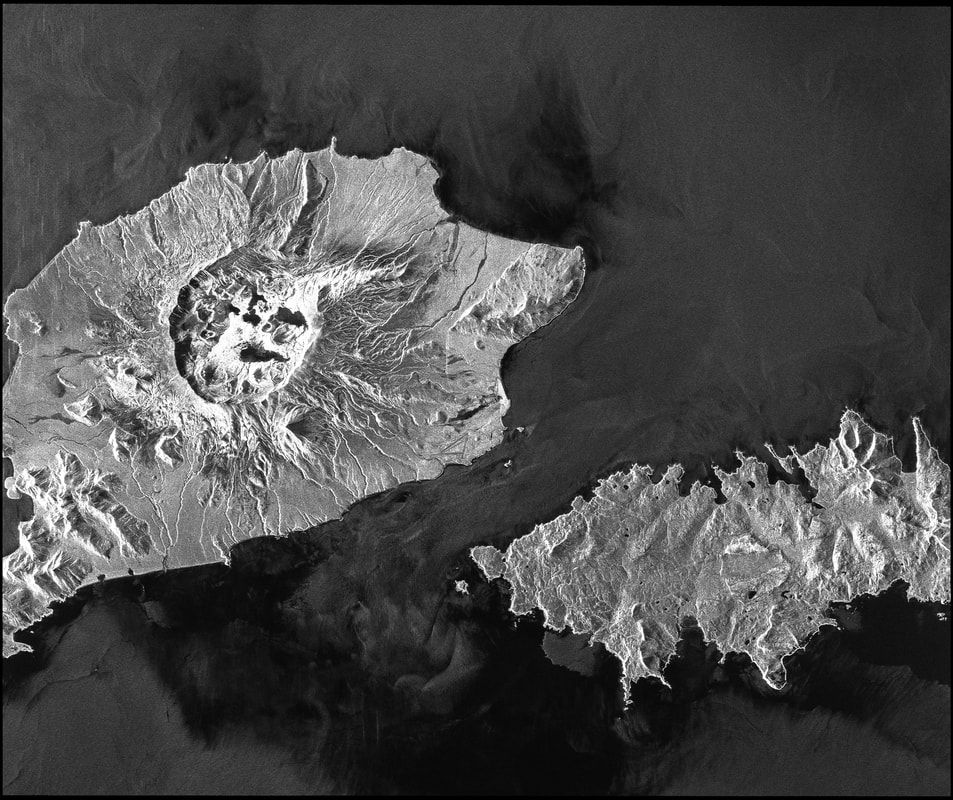
This ALOS-Phased Array L-band SAR (PALSAR) image of Okmok volcano in the Aleutian Islands was collected on 13 October 2010. The image provides data on the structure of the crater and drainage patterns on the volcano. Wind patterns related to the volcano can be seen in the differing backscatter values of the water. © JAXA/METI 2010
Jill
Hello All, We have been looking at geothermal hot springs and finding inspiration from Yellowstone and its inhabitants for the previous creature designs. This week I’ve been focusing on finding some exciting locations for hydrothermal vents and for some unique and curious life that inhabits them. I combed through information on different hydrothermal vent fields and was particularly engrossed in discoveries in the polar regions. I was inspired by Loki’s Castle (73°32'60.00"N, 8° 9'0.00"E) for its far north location, fantastical name sake, and the “Dumbo Octopus” that has been found there.
Some great video of Loki’s Castle and the curious creature called the “Dumbo Octopus” can be seen in the following links from the University of Bergen expedition dive.
Here is a remarkable video of the Vulcanoctopus in action from GEOMAR
I’m looking forward to next week where we will be discussing these locations and creature adaptations. Until next week! -Jill References: 1. González, Á.F.; Guerra, Á.; Pascual, S.; Briand, P. (1998). Vulcanoctopus hydrothermalis gen. et sp. nov. (Mollusca, Cephalopoda): an octopod from a deep-sea hydrothermal vent site. Cah. Biol. Mar. 39(2): 169-184.: http://www.vliz.be/en/imis?refid=66485/ 2. Rocha Francisco, Gonzalez Angel, Segonzac Michel, Guerra Angel (2002). Behavioural observations of the cephalopod Vulcanoctopus hydrothermalis. CBM - Cahiers de Biologie Marine, 43(3-4), 299-302. Open Access version : http://archimer.ifremer.fr/doc/00000/897/ 3. Nakamura K, Watanabe H, Miyazaki J, Takai K, Kawagucci S, et al. (2012) Discovery of New Hydrothermal Activity and Chemosynthetic Fauna on the Central Indian Ridge at 18u–20uS. PLoS ONE 7(3): e32965.doi:10.1371/journal.pone.0032965.: http://journals.plos.org/plosone/article?id=10.1371/journal.pone.0032965/ 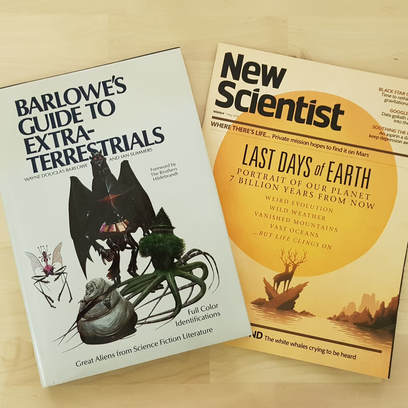 Speculative Biology from an artistic and scientific perspective Speculative Biology from an artistic and scientific perspective Rosemary Speculative Biology I did some reading around Speculative Biology this week and the science behind fictional creatures. There was a great feature in New Scientist (7 May 2016) speculating on animals evolving new adaptations that could survive the rising temperature of the sun in 500 million years. My creature designs so far are focused on new adaptations of heat-resistance through symbiosis with thermophilic bacteria to better survive in a volcanic environment. From this article, I have new inspiration to try intrinsic adaptations. For example, an animal could evolve an iron-rich shell or a sack of water on its back to act as a bio-shield from intense radiation (Ward, 2016, cited in Ridgway, 2016). Wayne Douglas Barlowe Barlowe is a veteran of Speculative Biology. He designs creatures for both scientific and entertainment purposes. Expedition (1990), Barlowe’s fictional account of a 21st-century exploratory space flight to the imaginary planet Darwin IV, features some creatures with striking similarities to Peter Ward’s water sack speculations (cited in Ridgway, 2016). Wayne Barlowe has also created some inspiring horror creatures that still have a basis in science and believability. His interpretation of the Old One from Lovecraft’s At the Mountains of Madness (1936) is reminiscent of a creature suited to a hydrothermal vent environment. Barlowe’s concept for the vampires from the film Priest (2011) appears to be a more creaturely and bat-like quadruped than a typical anthropomorphised version. Closing Thoughts Taking some time to explore more inspiration for speculative heat-resistant adaptations has been beneficial. In order to capture the horror theme Jill and I wish to visualise, I will adapt the real-world creatures in more extreme ways, taking inspiration from astrobiology, palaeontology and the fascinating work of Wayne Douglas Barlowe: https://waynebarlowe.wordpress.com/. References Barlowe, W. D. and Summers, I. (1979) Barlowe’s Guide to Extraterrestrials. New York: Workman Publishing Company. Barlowe, W. D. (1990) Expedition. New York: Workman Publishing Company. Lovecraft, H. P. (1936) ‘At the Mountains of Madness’, Astounding Stories, (February-April 1936). Priest (2011) Directed by Scott Stewart [Film]. Culver City, CA: Screen Gems. Ridgway, A. (2016) ‘Swansong Earth’, New Scientist, (7 May 2016), pp. 28-32 Jill Hello All, In the lead up to Halloween, I’ve been thinking more deeply about horror and fantasy themes in film and how to integrate them with science. Science of Science Fiction Film Series at UAMN I had the pleasure of attending a Science in Science Fiction two-night event at our campus museum. We watched two classic science fiction films and enjoyed lectures by visiting film scholar Michael Lee (University of Oklahoma). He presented on the history and cultural context of the films and a microbiologist and entomologist presented on the fascinating science behind the respective films. The first night my screenwriting professor Len Kamerling took our class on a field trip to experience the “House of Dracula” (1945). It was very illuminating to get a film history lesson on studio production of monster movies and the transition from the scares of the supernatural to science fiction during World War II. Additionally, the lecture included the film’s portrayal of scientific cures for vampirism, shapeshifting (werewolf), and physical deformity. UAF microbiologist Mary Beth Leigh presented on infection, rabies, fungi, and penicillin. 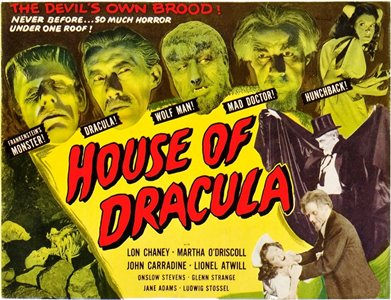 House of Dracula, 1945 House of Dracula, 1945 The second night featured “The Deadly Mantis”, 1957. The lecture on film history included the themes of the Cold War era and the history behind the military footage and recruitment techniques in the film. I felt bad for the mantis in the end because there was no attempt to preserve or study it. Just kill it. Kill it with fire! Poor mantis. UAMN Insect Curator Derek Sikes lectured on the insects and paleontology represented in the film, mantis biology and gigantism in insects including modern species as well as those in the geologic record. I thoroughly enjoyed this approach of combined science and film analysis with opportunity for discussion and questions after the films. I am sure we can draw some inspiration from the event. Satellite Imagery In addition to textural studies, Rose and I have started to discuss ways to integrate satellite imagery into creature design. I work with RADAR data and am interested in change detection in large-scale landscape features, such as volcanoes, drainage patterns, sea ice movement, fire burn scars. I think it would be interesting to utilize this spaceborne perspective in our designs. Or possibly looking at patterns in nature that occur at multiple scales. Here is an example digital elevation model (ArcticDEM) of my study area in Kamchatka, Russia. 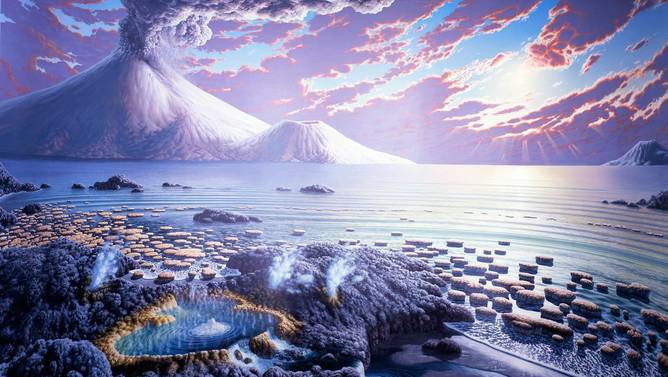 Artist concept of the Archean Eon by Patrick Sawyer Artist concept of the Archean Eon by Patrick Sawyer Jill It came from the primordial ooze… Hello All, We had a great time this week focusing on the speculative elk-like creature. We discussed travertine formations, mineral precipitates, as well as stromatolites and how these structures grow. We wanted to integrate elements into the creature design that would reflect the animal behavior and relationship to the hot-springs environment. For instance, what kind of behavioral traits would be necessary for an elk-like creature to accumulate mineral precipitates or microbial mats? We envision the long passage of time, something ancient, that calls back to the primordial beginnings of life on Earth. A slow-moving creature, that would spend a lot of time submerged and resting in the thermal waters, that would in turn form deposits on the body. See how the conversation took shape in Rose’s amazing artwork! In keeping with our interest in cabinets of curiosities, I thought I’d do some museum recon. I went for a lunch time stroll over to the University of Alaska Museum of the North, fortunately located right here on campus. I was looking for some inspiration on how animals and their environments are presented in museum collections. In the permafrost section of the museum, there are some uniquely preserved specimens. Did somebody say mummy? That’s right, the highlight of the collection is a mummified specimen called Blue Babe, an amazingly well-preserved steppe bison (~36,000 yrs old). Its bluish coloration was a result of phosphorus in the body reacting with iron in the soil to produce vivianite, a mineral that turned blue when exposed to air. It is incredibly cool to me (pardon the pun) to see the preservation of this animal due to its burial conditions. 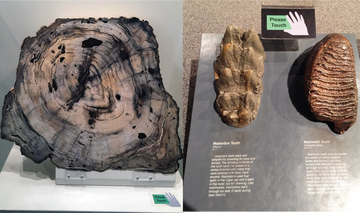 Please Touch Displays at the University of Alaska Museum of the North Petrified Wood, Mastodon and Mammoth Teeth. Photo by Jill Shipman. Please Touch Displays at the University of Alaska Museum of the North Petrified Wood, Mastodon and Mammoth Teeth. Photo by Jill Shipman. Aside from mummies, I found the exhibits that incorporated a tactile display to be the most enjoyable. My favorites were the things I could touch such as the petrified wood and mastodon/mammoth teeth. Interestingly, these are all growth structures which seemed to be the focus of a lot of our conversation this week and was at the front of my mind. Thinking on ways Rose and I can integrate an interactive component into our collaboration. Something to consider as we move forward. Until next week! -Jill Rosemary Patterns in nature Jill and I keep returning to our interest in the patterns, textures and colours of the hot spring environment. I needed to re-focus my elk-like creature development to include these motifs. I collected more moodboards of bacterial/mineral growth patterns and stromatolite forms and patterns. Digital development This week, I decided to move into digital techniques. This would better allow me to use the colours and textures from the environment as overlays on the elk-like creature. I produced iterations of the elk-like creature to visualise our discussion about its behaviour – a slow-moving creature that has travertine build-up because of the time it spends resting in the hot pools. Colour studies were created by overlaying colours from the environment. This created unexpected blends with the textures and tonal values already in my initial painting. These will need refining, but this serendipitous way of working allows for a more interpretive reference to the volcanic hot spring environment. 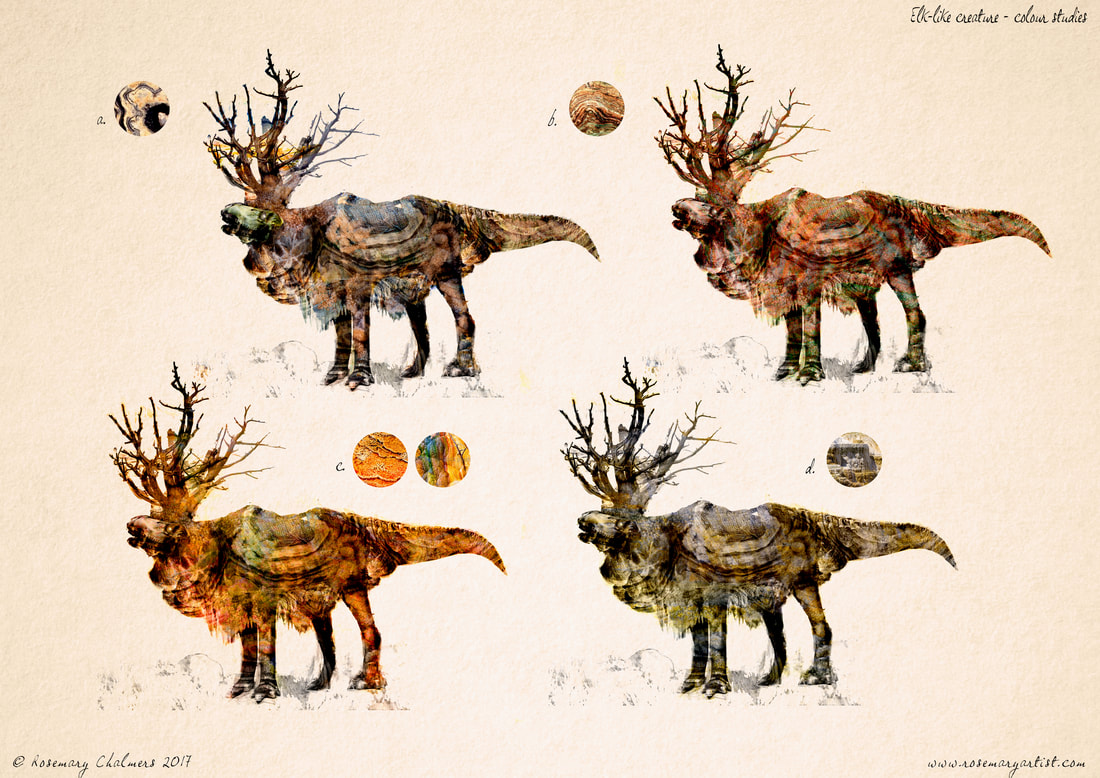 Elk-like creature digital colour studies Elk-like creature digital colour studies Closing thoughts Now that I have developed a digital workflow that can represent our interest in the patterns, textures and colours of the hot spring environment I could move on more quickly to other speculative creatures to populate our dark fantasy world. We have also discussed our shared interest in still exploring the hydrothermal vent environment as another facet to our world-building. Jill Hello All, It’s October, my favorite time of year. All Hollows’ Eve is just around the corner and the snow flies here in Alaska as I write this blog. I love gothic horror. I love those most notable stories of Dracula, Frankenstein, and the works of Edgar Allan Poe. I enjoy the architecture, literary romanticism, and the landscapes. Also, the fog. Can’t forget the fog! What I really dig about these stories is exploring what we fear in ourselves and in nature. In developing the screenplay, I wonder how can we create a darker atmosphere in the story, one that examines our fears about human impact on the environment and exploitation of resources? Food for thought as we develop our project. This week we discussed ways to get the story off the page and produce something interactive, like what kind of event could we create that would promote discussion about art and science? There are lots of great resources at our respective universities, so that seems like a great place to start. We could hold a reader’s theatre event with a talk back portion or an interactive art exhibit, maybe joined together? In December, I will lead a presentation on our project at the American Geophysical Union (AGU) in New Orleans. This presentation is part of a larger Art and Science Community at AGU. The presentation will be in an interactive digital format so we will need to start working on what elements we can incorporate into the presentation. Looking forward to our next work session. Until next week! -Jill Rosemary Speculative Elk This week I have been developing a speculative elk-like creature. Jill and I have been attempting to re-focus on a dark fantasy world. The sketches show the beginnings of a more horrific creature. Existing in the hot springs, we have speculated that it would have a mineral build-up of travertine, much like a whale gathers barnacles, giving the impression that it is a very ancient creature. Closing Thoughts
Next week I will be looking further into different travertine formations and travertine builders such as certain species of algae and mosses. This will aid me in finalising the way the travertine has built-up on the elk-like creature. 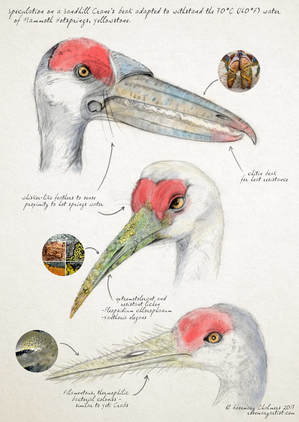 Speculation on heat-resistant beaks of the Sandhill Crane Speculation on heat-resistant beaks of the Sandhill Crane Rosemary Speculative Sandhill Cranes This week I have been speculating on how a Sandhill Crane’s beak could be adapted to withstand the heat of the water at Mammoth Hot Springs (70°C/160°F). I have chosen the Sandhill Crane as a resident of Yellowstone National Park. Below the image, I have justified my iterations. Chitin The Yeti Crab, as discussed last week, is an example of an extremophilic animal that can withstand the environment around hydrothermal vents. Being a crustacean, its exoskeleton is composed of chitin. Chitin is an organic polymer comparable to keratin. Evidence shows it is resistant to extreme temperatures (Deguchi, S. et al., 2015) therefore I have speculated that a chitinous beak may be more heat-resistant than a standard keratin-based beak. Extremotolerant & Resistant Lichens Another speculation was to have the beak covered with colonies of lichens. There is evidence that some species of lichen are extremotolerant (Meessen et al. 2013). It is interesting that lichen is a symbiosis between cyanobacteria, algae and fungi. Cyanobacteria is one of the thermophilic bacteria that is prevalent in Yellowstone’s hot springs, such as the Grand Prismatic Spring. Also, fungi have a chitinous cell wall. Filamentous, Thermophilic Bacterial Colonies The Yeti Crab has also formed a symbiosis for better adaption to the hydrothermal vent ecosystem. The filamentous, thermophilic bacteria that covers the surface of the crab oxidises the sulphides in the water (Goffredi, S. et al., 2008). Filamentous bacteria also cluster on the surface of the Pompeii Worm allowing it to exist in temperatures of 80 °C (176 °F). Perhaps these filamentous, thermophilic bacterial colonies could provide heat-resistance for the Sandhill Crane’s beak. Closing Thoughts From Microbiology to Mycology: branching into other disciplines is providing useful for speculating on a more heat-resistant beak for the Sandhill Crane of Mammoth Hot Springs. There are still questions to be answered: how will the crane walk across the pools which are not only hot but also made of delicate Travertine? How could the feathers be adapted to the steam rising from the terraces of Mammoth Hot Springs? What would the Sandhill Crane feed on in the hot spring water? A challenge of collaboration, I have found, has been that the ideas between Jill and I come faster than my drawings can keep up with! Also, communicating the idea in a clear and scientific way has adapted my presentation method for my drawings. How can a drawing be aesthetically pleasing, fit within a specified art direction and communicate a scientific concept? References Deguchi, S. et al. (2015) In situ microscopic observation of chitin and fungal cells with chitinous cell walls in hydrothermal conditions. Sci. Rep. 5, 11907; doi: 10.1038/srep11907. Goffredi, S. et al. (2008) Epibiotic bacteria associated with the recently discovered Yeti crab, Kiwa hirsuta. Environmental Microbiology 10: 2623–2634. doi:10.1111/j.1462-2920.2008.01684.x Meessen, J. et al. (2013). Extremotolerance and Resistance of Lichens: Comparative Studies on Five Species Used in Astrobiological Research I. Morphological and Anatomical Characteristics. Origins of life and evolution of the biosphere: the journal of the International Society for the Study of the Origin of Life. 43.. 10.1007/s11084-013-9337-2. 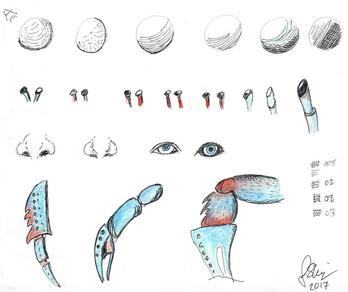 Initial test sketches for a creature idea by Jill Shipman Initial test sketches for a creature idea by Jill Shipman Jill Hello All! The first five pages… This week I have been working on writing a screenplay. As part of my coursework, I am charged with writing a short twenty-page script. I thought it would be a great opportunity to write a story for the speculative creatures we will design through our collaboration. Environmental protection and conservation of biodiversity is important to both of us. Keeping that theme at the center of the story and factoring in our scientific interests and aesthetic sensibilities, I needed to create a premise, a sentence or two that describes the main character(s) and the story. Through our brainstorming we came up with some great visuals and ideas but it was a challenge for me to create the premise and tie it all together. Every idea I was pursuing was too much about fitting to the world we were creating. I think I was putting the cart before the horse so to speak. Why? Conflict. I needed to focus on the characters first. It didn’t have enough conflict and the characters were all too nice. That just doesn’t work for dramatic writing. Drama requires an opponent and conflict! I had a break in my writer’s block last week when I shifted focus from building the environment onto developing the characters and the dialogue. From the situation and the character choices I can then return to describing the world that supports the story. I’m really looking forward to our meeting this week, refining the premise statement, getting feedback from Rose, and incorporating the direction she is going with the creature design. I will build upon our discussions to revise the first five and draft the next few pages. The hardest part really was in dismissing the inner critic and getting something on the page. You can’t edit a blank page! Until next week! -Jill |

